
Ashfield
DISTRICT COUNCIL
Statement of Accounts
2020/21

STATEMENT OF ACOUNTS 2020
-
2021
1
CONTENTS
PAGE
NARRATIVE REPORT 3
THE STATEMENT OF RESPONSIBILITIES FOR THE STATEMENT OF ACCOUNTS 22
AUDIT CERTIFICATE AND OPINION 23
STATEMENT OF ACCOUNTING POLICIES 27
THE CORE FINANCIAL STATEMENTS
COMPREHENSIVE INCOME AND EXPENDITURE STATEMENT 41
MOVEMENT IN RESERVES STATEMENT 43
BALANCE SHEET 46
CASH FLOW STATEMENT 48
NOTES TO THE CORE FINANCIAL STATEMENTS
1. ACCOUNTING STANDARDS TO BE ADOPTED 49
2. CRITICAL JUDGEMENT IN APPLYING ACCOUNTING POLICIES 49
3. ASSUMPTIONS MADE ABOUT FUTURE AND SOURCES OF UNCERTAINTY 50
4. MATERIAL ITEMS OF INCOME AND EXPENSE 52
5. EVENTS AFTER THE BALANCE SHEET DATE 52
6. EXPENDITURE AND FUNDING ANALYSIS 52
7. EXPENDITURE AND INCOME ANALYSED BY NATURE 57
8.
ADJUSTMENTS BETWEEN ACCOUNTING BASIS AND FUNDING BASIS UNDER STATUTE 58
9. GRANT INCOME 63
10. INTEREST PAYABLE AND OTHER CHARGES 65
11. TANGIBLE NON
-
CURRENT ASSETS 66
12. HERITAGE ASSETS 69
13. TANGIBLE NON
-
CURRENT ASSETS VALUATIONS 70
14. INVESTMENT PROPERTIES 71
15. INTANGIBLE NON
-
CURRENT ASSETS 73

STATEMENT OF ACOUNTS 2020
-
2021
2
CONTENTS CONTINUED
16. GAINS AND LOSSES FROM THE SALE OF ASSETS 73
17. FINANCIAL INSTRUMENTS 73
18. INVENTORIES 75
19. DEBTORS 75
20. CASH AND CASH EQUIVALENTS 76
21. ASSETS HELD FOR SALE 76
22. CREDITORS 77
23. PROVISIONS 78
24. USABLE RESERVES 80
25. UNUSABLE RESERVES 83
26. CASH FLOW STATEMENT NOTES 88
27. MEMBERS ALLOWANCES 89
28. OFFICERS’ REMUNERATION AND EXIT PACKAGES 90
29. EXTERNAL AUDIT COSTS 94
30. RELATED PARTY TRANSACTIONS 94
31. CAPITAL FINANCING REQUIREMENT 96
32. ASSETS HELD AS LESSEE 96
33. ASSETS HELD AS LESSOR 97
34. REVALUATION LOSS 97
35. RETIREMENT BENEFITS 97
36. CONTINGENT ASSETS AND LIABILITIES 103
37. DEFERRED CREDITS 105
38. JOINT CREMATORIUM COMMITTEE 105
39.
NATURE AND EXTENT OF RISKS ARISING FROM FINANCIAL INSTRUMENTS
106
40. TRUST FUNDS 108
SUPPLEMENTARY FINANCIAL STATEMENTS
HOUSING REVENUE ACCOUNT 109
COLLECTION FUND 115
ANNUAL GOVERNANCE STATEMENT 120
GLOSSARY OF TERMS AND ABBREVIATIONS 160

STATEMENT OF ACOUNTS 2020
-
2021
3
NARRATIVE REPORT
1. BACKGROUND TO
THE NARRATIVE REPORT
The Accounts and Audit (England) Regulations 2015 introduced a requirement for
Local Authorities to publish an annual narrative report to accompany its Statement
of Accounts. The purpose of the narrative report, which replaced the explanatory
forward in the Statement of Accounts, is to comment on the Council’s financial
performance and economy, efficiency and effectiveness in its use of resources over
the financial year. The Narrative Report summarises what Ashfield District Council
spent in 2020/21, how it was spent and what has been achieved in line with the
Corporate Priorities. It provides a narrative context to the accounts by presenting
a clear and simple summary for residents, of Ashfield’s financial position and
performance for the year and its prospects for future years.

STATEMENT OF ACOUNTS 2020
-
2021
4
Despite the Covid-19 pandemic, 2020/21 has proved
to be a very successful year for Ashfield both in
terms of maintaining high quality service delivery
and continued effective financial management.
A robust 2020/21 budget set for the year
supplemented by effective, responsible financial
control by accountable officers and close scrutiny by
elected Members has again enabled the Council to
deliver within budget.
This year I am particularly delighted with the
progression of our capital programme and
specifically the commencement of building our new
Leisure Centre in Kirkby supported by £3m funding
from our partners; Sport England and the Local
Enterprise Partnership (LEP); our future planned
investment in our Leisure Centres at Hucknall and
Lammas and the vast improvements we have been
able to make to our parks and open spaces during
the last year. This has been of immense importance
to assist with the health and well-being of our
residents during the pandemic when access to so
many facilities has been significantly compromised
and for long periods of time.
The Council secured over £6.27m from the Future
High Streets Fund to invest in Sutton-in-Ashfield
and £62.6m Towns Fund for both Sutton and Kirkby.
This investment in our District will offer huge
opportunities to our local residents and businesses
going forward.
In 2020/21 the Council secured over £1m in Green
Homes Grant funding to support investment in both
council and private housing across the District. We
have also submitted a funding bid for more of this
funding which, if successful, will see this investment
double to over £2m. This funding will both improve
energy efficiency ratings and reduce energy costs
for low income households and help reduce the
District’s carbon footprint – something this Council
is very passionate about addressing.
Ashfield is an ambitious and aspirational Council,
but also one that delivers. We put our residents at
the heart of everything we do.
We know Ashfield, like all Councils faces future
financial challenges but with our passion and desire
we are confident that we will continue to invest
in our District and through this deliver increased
chances of an improved quality of life for our
residents.
Cllr Jason Zadrozny
Leader of Ashfield District Council
2. COUNCIL LEADER’S
PREFACE
Cllr Jason Zadrozny
Leader of Ashfield District Council

STATEMENT OF ACOUNTS 2020
-
2021
5
As the Council’s Chief Finance Officer I am pleased
to present Ashfield District Council’s Statement
of Accounts for the year ending 31st March 2021.
The Statement aims to provide information to all
stakeholders (residents, local businesses, Councillors,
partners, members of the public) so that they can:
• Understand the overall financial position of
the Council and the Outturn for 2020/21
• Have confidence that the Council has used and
accounted for public money in an appropriate
manner
• Be assured that the financial position of the
Council is sound and secure
This Statement of Accounts has been prepared and
published in accordance with the Code of Practice
on Local Authority Accounting 2020/21 issued
by the Chartered Institute of Public Finance and
Accountancy (CIPFA) and the Accounts and Audit
(Amendment) Regulations 2021.
The Statement of Accounts should be read in the
context of continuing demand and cost pressures on
the services provided by the Council, and the level
of resources available to fund them. This includes
the additional financial challenges and government
funding made available as a consequence of the
Covid-19 pandemic. There remains significant
uncertainty about the level of future Government
funding pending the outcome, timing and impact of
the delayed Spending Review, Fair Funding Review,
the future level of Business Rates retention and the
Business Rates re-set, the future of New Homes
Bonus funding and the national response to financial
recovery from the pandemic. As a consequence of
the pandemic the Government agreed a one year
financial settlement for 2021/22 and has indicated
a full Spending Round from 2022/23. Whilst the
short term funding decisions are understandable
given these circumstances this does severely hamper
effective longer term financial planning.
The pressures on Council services will continue to
rise and the future financial position of the Council
will be dependent on its ability to manage demand
with reducing resources. The Council is progressing
implementation of its Digital Services Transformation
Strategy at a pace, which along with the review of
current services and service level provision, and the
identification of opportunities for additional income
generation, will be critical to the Council’s ongoing
financial sustainability. Ashfield is not unique in this
regard – all Councils face this funding uncertainty.
We know that further challenges lie ahead and the
Council’s Cabinet working with senior management
are actively progressing options to address these
challenges. The 2020/21 accounts demonstrate
the Council’s success, despite the impact of the
pandemic, in continuing to deliver quality services
within budget and this will put the Council in a good
position in respect of addressing future financial
challenges.
Pete Hudson ACMA, CGMA
Corporate Finance Manager (S151 Officer)
3. INTRODUCTION TO
THE NARRATIVE STATEMENT
BY THE CORPORATE FINANCE MANAGER
(
SECTION 151 OFFICER
)
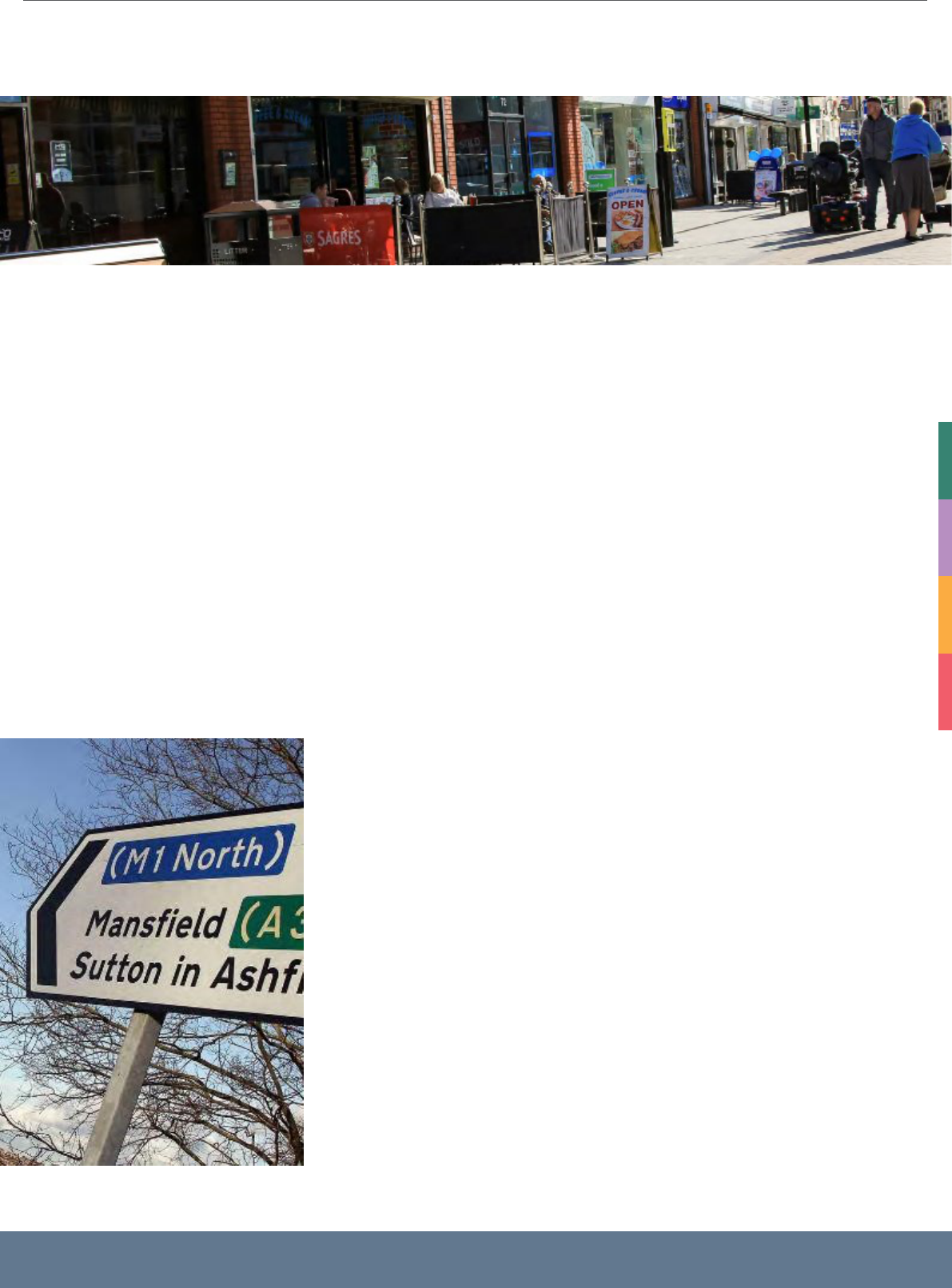
STATEMENT OF ACOUNTS 2020
-
2021
6
4. INTRODUCTION TO
THE DISTRICT OF ASHFIELD
Ashfield is situated within North Nottinghamshire and serves a population of approximately
127,900 residents (ONS 2019 mid-year estimates) covering an area of 42 square miles across
three towns (Kirkby-in-Ashfield, Sutton-in-Ashfield and Hucknall) and a number of rural
villages. The area boasts a mix of beautiful countryside, complemented by award winning
urban and country parks. Ashfield is one of seven District Councils in Nottinghamshire.
Ashfield has excellent transport
links through the M1 motorway,
bus, rail and tram links which
makes the area an ideal business
location. The District is also within
one hour’s drive of East Midlands
Airport and Doncaster Sheffield
Airport.
Ashfield has traditionally relied
on the manufacturing sector for
local employment but recognises
the need to move to a more
diverse local economy offering
‘high value added’ services as well
as manufacturing. In 2020 the
unemployment rate (16-64) was
4.0% which is lower than the East
Midlands average (4.8%) and the
national average (4.7%), however,
those in employment on average
earn less (£504 per week gross, an
increase of 0.6% on 2019) than the
average weekly pay in Great Britain
(£587, no change since 2019).
The Council is working with its
partners to address the skills gap
and promote the area as a place
to invest, particularly for Creative,
Business, Professional Financial
Services, Advanced Manufacturing
and Knowledge Based Industries;
and to connect local people to
local jobs.
Since October 2016 the Council
has managed its own housing
stock and remains committed to
providing good quality housing
and continues to invest in its
housing stock. In the last 3 years
the Council has also acquired 34
additional properties to grow
its stock and help meet the
social housing needs of Ashfield
residents. During 2020/21 £2.6m
was spent to maintain Council
houses to the Decent Homes
Standard. This is significantly less
than in 2019/20 (£4.3m) largely as
a consequence of the pandemic
delaying planned works. As at the
31st March 2021 the Council has
6,635 Council dwellings.
Although the rate of building
new homes in the District has
declined in the last 18 months, new
properties do continue to be built
and the Council Tax base continues
to grow. The majority of properties
within the District are categorised
at the lowest levels for Council Tax
billing purposes, Band A to Band
C. Band A: 46%, Band B: 22% and
Band C: 18%. Of the £68.834m of
Council Tax raised in 2020/21, the
Council received £6.418m to help
provide residents with the services
on which they rely.
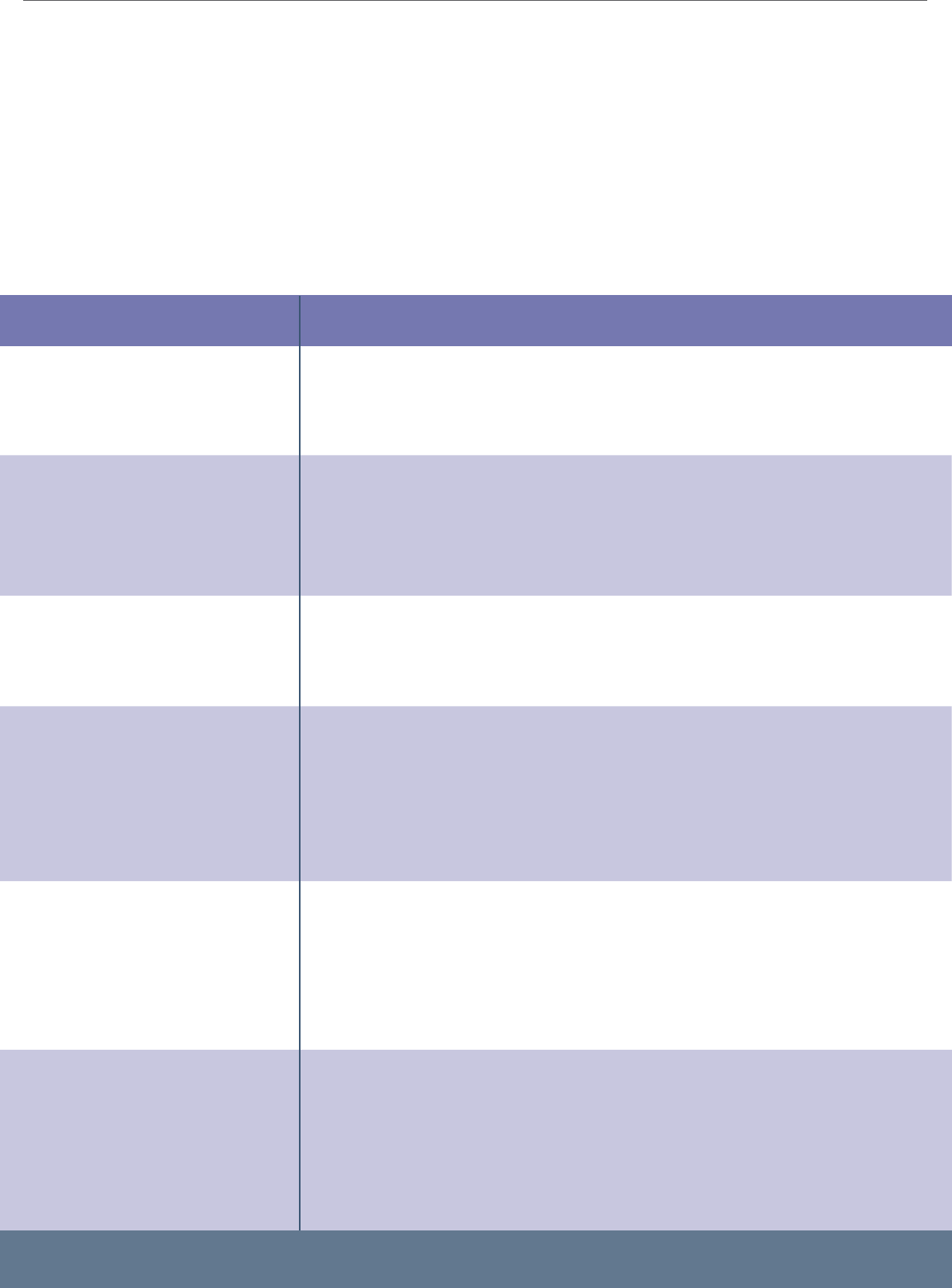
5. GOVERNANCE & RISK
There have been no significant changes in governance arrangements during 2020/21. Details of the
Council’s governance arrangements, its identified potential risks and the planned mitigation of those risks is
set out in the Annual Governance Statement (AGS) which includes the ongoing impacts and response to the
COVID-19 pandemic together with an update regarding recovery to date. The impact of exiting the EU is to
be imminently removed as a key risk from the Corporate Risk Register.
The key corporate risks and planned mitigation are shown in the table below:
Corporate Risk
Future financial sustainability
Failure to adopt a Local Plan
Delivery of Digital Services
Transformation Programme
Monitoring of Investment in
Commercial Properties
Data Matching and National
Fraud Initiative
COVID-19 pandemic – risk
developed as part of recovery
work to cover communities,
business, Council finances and
ways of working.
Risk Mitigation
Robust balanced budget for 2020/21.
Ongoing work programme with Cabinet/CLT to identify savings and income
generating opportunities to address the estimated funding gap: Digital Services
Transformation agenda, service reviews, review of fees and charges, procurement
savings.
A Member Working Group has been meeting regularly. Consultants, where
appropriate have been engaged in order to develop the evidence base. Ongoing
support from Members to engage in a timely way in the process and their support
for the consultation process. Championing from the Chief Executive and Director.
A revised timeframe has been developed and reports are being prepared for a
future Cabinet relating to the Local Development Scheme and public consultation.
Team restructures including recruitment to key posts has taken place. Several
projects are now delivering at a pace with effective project management in place
to deliver future projects, savings and efficiencies. Means of funding the various
projects is in place. Member Champion identified and aligned with Scrutiny
Committee work plan.
Regular updates to CLT, Leadership and Audit Committee to monitor existing
Portfolio. No further acquisition to take place following outcome of Public Works
Loans Board (PWLB) consultation. Consultants remain engaged to provide
specialist knowledge regarding the investment market and also to assist with the
monitoring of the portfolio. Monitoring through Commercial Investment Working
Group (officer group). Member training has been provided. Risks effectively
managed through Covid pandemic to date. Loss of one tenant expediently
replaced by another.
A Data Matching Sub Group of the Anti-Fraud Officer Working Group had been
established to specifically focus on Data Matching. The Sub Group had an action
plan for embedding and improving the Council’s Data Matching processes
and this will be monitored by the main group. Annual reports to CLT and Audit
Committee also planned. Due to the COVID Pandemic and realigning of resources
to meet the demands of administering and awarding COVID Grants, the progress
of this work plan has not taken place although extensive use of NFI and Spotlight
has taken place to assist with assessing business grant eligibility.
Recovery work has commenced which will identify the risk to the Council and
the Communities further. Internal structures have been established to oversee
the local recovery work as well as play a part in the Local Resilience Forum (LRF)
recovery work. An initial Recovery Strategy was reported to Cabinet on 30 June
2020. The Covid Response and Recovery Scrutiny Panel was established to focus
on and monitor the Council’s response and recovery and has been meeting
frequently; the panel will continue to meet during 2021/22 with a revised focus on
recovery.
STATEMENT OF ACOUNTS 2020
-
2021 7

STATEMENT OF ACOUNTS 2020
-
2021
8
6. CORPORATE PLAN
The current Corporate Plan covers the period 2019 to 2023 and was originally
approved by Cabinet in September 2019 with a refresh of the Plan being approved
by Cabinet in July 2020.
OVERALL PERFORMANCE 2020/21
Corporate Plan progress is monitored through both the successful delivery
of key projects and initiatives, and performance achieved against the
corporate scorecard.
Overall, the corporate scorecard outturn for April 2020 to March 2021 and
despite the full year and continuing impact of the Covid-19 pandemic
indicates the following:-
of measures achieved or exceeded target, or were
within a 10% variance of target.
of measures indicated an improved position compared
to the previous year, or were within 5% of previous
year’s performance levels.
75%
67%
VISION
The purpose of the Council as set out in the
current Corporate Plan is to:
a. Serve the Communities and Residents
of Ashfield;
b. Provide good quality, value for money
services; and
c. To act strategically and plan for the
future, working with others to bring about
sustainable improvements in people’s lives.
PRIORITIES
The Council’s Priorities as set out in the current
Corporate Plan are:
a.
Health & Happiness;
b.
Homes & Housing;
c.
Economic Growth & Place;
d.
Cleaner & Greener;
e.
Safer & Stronger; and
f.
Innovate & Improve
Each Directorate has a number of service areas
and each has a Service Plan which supports
effective delivery of the Corporate Plan priorities.

STATEMENT OF ACOUNTS 2020
-
2021
9
7. OPERATIONAL
PERFORMANCE / ACHIEVEMENTS
2020/21
The Council has delivered significant achievements in 2020/21. Some of the key achievements set
out by Corporate Plan Priority are:
Health and Happiness
• Leisure:
• Commenced the build of the new Kirkby Leisure Centre following
the contract award to Kier, including securing £3m from Sport
England and the Local Enterprise Partnership (LEP) towards this
key investment.
• Successfully re-let the Leisure Operating Contract to Everyone
Active for a period of 10 years.
• Secured £280k through the National Leisure Recovery Fund to
support the successful transitional reopening of leisure facilities.
• Through the Ashfield Community Fund distribution of over £40,000 to
the Community and Voluntary sector in Ashfield, to help them support
residents negatively impacted by Covid. In addition, the Council
co-ordinated over £120k of Covid Winter Grants (food vouchers) to
vulnerable residents.
• Ashfield Health and Wellbeing Partnership has launched a new strategy
for 2021 – 2025, which is focussed on delivering outcomes to enable
residents to have the best start in life, make healthy choices, age well,
be physically active and live and work in environments that foster positive
mental wellbeing.
• The Council has worked tirelessly with Public health England to provide
safety advice to businesses in relation to Covid interpreting legislation,
providing advice and guidance.
Homes and Housing
• Throughout the year of the pandemic we successfully eliminated
homelessness by implementing the ‘everyone in’ homeless initiative.
• Ashfield has been the lead authority in securing £1m Rough Sleeper
Initiative to improve opportunities and support for rough sleepers and
those threatened with rough sleeping across the County.
• Work has commenced on 2 new affordable Council housing

STATEMENT OF ACOUNTS 2020
-
2021
1 0
developments. The new homes will be thermally efficient and will
minimise carbon usage.
• Successful bid for £1m funding to improve thermal efficiency ratings
of domestic properties, both Council owned and private sector.
• Statutory Gas Safety Checks – Despite the pandemic, achieved
a compliancy rate of 99.67% with only 22 properties could not provide
access due to issues such as self-isolating or shielding.
• For 2020/21, 99.37% of emergencies repairs were attended to in
Government timeframes (5,356 repairs out of 5,390).
Economic Growth and Place
• Kirkby and Sutton Towns Funding – the Town Investment Plan for Kirkby
and Sutton was submitted to MHCLG in February 2021 with a request for
over £62m and potential investment of £99m. An announcement on the
Town Deal offer is due in early June.
• The Future High Streets bid for Sutton was successful and over
£6.27m has been secured to deliver projects to revitalise the town centre.
• Town centre masterplans for Kirkby and Sutton were adopted and
underpinned the Towns Fund bids and Station Masterplans bids.
• Planning applications continue to be processed well above
nationally prescribed standard targets, with 95% of major applications
being processed within 13 weeks and 91% of minor applications within
8 weeks.
• An Economic Recovery Plan post Covid has been developed and is being
implemented.
• The Council was successful in achieving the Restoring Your Railways bid
Cleaner and Greener
• A review of the standard of all of our parks, open spaces, play areas
and sports facilities has been completed. Investment of £1.8m in parks
and green spaces has continued with improvements completed at 19
sites. This has resulted in a significant increase in the numbers of people
using them – critical during the pandemic when alternative facilities have
been closed or access significantly restricted.
• The Council has developed a set of carbon emissions baseline
for its activities, which can be used to track progress in the reduction of
such emissions in future and is working with Nottingham City Council to
develop a carbon reduction strategy and action plan.

STATEMENT OF ACOUNTS 2020
-
2021
1 1
Safer and Stronger
• The Council has responded to 2,574 reports of anti-social and nuisance
behaviour between April-September 2020, a 34% increase compared to
the previous year.
• CCTV is supporting the continued identification of ASB and crime and
disorder across the District with the use of cameras deployed in hotspot
locations to tackle both ASB and environmental crime.
• Domestic abuse remains a high priority, the Council has appointed a new
Domestic Abuse and Vulnerability Officer in October 2020. The officer
acts as the Council lead for MARAC (a multi-agency risk assessment
conference) and provides key support for survivors across the District.
Innovate and Improve
• Over 60,000 payments made online throughout the year, a significant
increase of 14% compared to last year and 25% higher over the last 2
years since we implemented our new ‘e-store’, exceeding channel shift
predictions.
• During 2020/21 over 7,300 business grant payments were processed to
Ashfield business, with a total value of around £30m.
• Online Benefit and Test & Trace applications implemented during the
year allowed the Council to process over 2,600 online benefits related
applications and receive and process almost 1,300 test and trace claims,
enabling £191,000 to be paid in test and trace grants.
• At the end of September, 2020, we launched a brand new, modern, user
friendly website, which was accredited by the Shaw Trust as fully meeting
accessibility standards. Over the last six months, since launch, website
usage statistics are indicating significant improvements, particularly
regarding the customer journey and easier access to information.
• Staff sickness absence out-turn has seen an 11% reduction compared to
the previous year.
• Procurement activities conducted by Nottingham City Procurement
on behalf of Ashfield have delivered savings of over £2.7m in spend
avoidance.

COVID 19 STATEMENT
Due to the Covid-19 pandemic the Council has put in place a number of measures throughout the year to
ensure that additional support and reporting mechanisms were in place (and continue to operate) to meet
both additional internal and external requirements. The Council’s response to the key issues presented by
the Pandemic are set out in the table below:
Area of Impact
Council’s Workforce
Service Delivery
Supply Chains & Third Parties
Issue / Response of the Council
From the outset of the pandemic the Council put in place a daily absence
monitoring system to identify emerging pressures on key services where
absence was being reported. This daily reporting has continued throughout
2020/21 and to date (June 2021). No staff have been furloughed and sickness
absence for the year 2020/21 is 11% lower than in 2019/20. Wherever possible
staff have been able to work from home and have been provided with the
relevant ICT to facilitate agile working.
The Council engaged and deployed additional agency staff as Covid Marshals
throughout the year to assist with providing advice and guidance to local
businesses and citizens on implementing covid secure measures and to also
enforce compliance where this has been necessary.
The Council has continued to deliver all of its key in-house services throughout
the year including an increase to its waste collection services to respond to the
additional demands presented by the pandemic, using additional agency staff
when necessary. At times during the year there were staff shortages within the
cemeteries team but these absences were covered through staff redeployment
and agency cover to ensure effective service continuity.
Most of the in-person appointments were replaced with on-line or telephone
service provision to maximise the protection of both the public and Council
staff. Where in-person appointments have been essential these have taken
place following strict Covid-safe guidance.
The Council’s staff have, on behalf of the Government, processed significant
volumes of business grants and business rates reliefs throughout the year to
ensure local businesses are supported. Where the Council has had discretion
over grant payments these are reflected in the Comprehensive Income
and Expenditure Statement (CIES) but where it has acted as Agent for the
Government (a conduit to pay businesses the grants to which they are entitled
as directed by Government) these are not reflected in the CIES.
Provision of leisure services by our partner ‘Everyone Active’ has followed
the strict Government guidelines throughout the year. During the limited
times when the Leisure Centres have been able to operate capacity has been
significantly restricted and this placed significant financial pressure on our
Leisure Partner. The Council has utilised some of its Covid-19 grant funding
to support the organisation and has also worked with them to successfully
secure further funding from the National Leisure Recovery Fund (NLRF – Sport
England) to aid its transitional recovery.
We complied with the Central Government Policy Note PPN 02/20 and 04/20
to support key suppliers to ensure business and service continuity. To comply
STATEMENT OF ACOUNTS 2020
-
2021 1 2

Area of Impact Issue / Response of the Council
Reserves / Financial
Performance / Cashflow
Reporting
Other Major Risks and
Recover Action
we identified key suppliers at risk and offered support. However, due to
changes in lockdown restrictions and other financial support they could access
themselves, no additional support was needed, we continued to pay suppliers
promptly.
Other than at the very start of the pandemic when there was a national
shortage, the Council has been able to access and provide relevant Personal
Protective Equipment (PPE) to its workforce.
The Council has delivered its service well within budget for the year both
for its General Fund and HRA Outturns. The unspent balance of our Covid
19 grant has been transferred to reserves and will be used to cushion any
further financial implications of the pandemic going forward.
The Council’s reserves have further increased in 2020/21 compared with
2019/20 which has further increased the Council’s financial resilience and
will assist with sustainability for the future – the Council remains a ‘going
concern’.
During the financial year the Council had no adverse impact on its
cashflow at any time, principally due to most grants being received from
Government in advance of the requirement to pay them to businesses.
The Council has been reporting on both the financial and performance
impacts of the pandemic throughout the year. This includes regular
reports to the Corporate Leadership Team (Standing Weekly Agenda item),
Cabinet, the Covid Scrutiny Panel (specifically established to monitor
pandemic impacts/recovery) and the Council.
The Council has also been submitting the various weekly, monthly,
quarterly and ad-hoc financial reports in respect of grant processing and
payment assurance to Government Departments.
Where appropriate Officer Decision Records (ODR’s) and Executive
Decision Records (EDR’s) have been prepared to record pandemic related
decisions.
The pandemic is not yet over and the furlough scheme is still currently in
place until the end of September 2021 at which time more will be known
about the impact on businesses and jobs. However, the Council’s recent
success in securing £62.6m Towns Fund funding and £6.27m Future High
Streets Fund funding along with other sources of match funding and the
significant ongoing investment in our leisure provision will bring new jobs
and businesses to the District and through the nature of these various
projects, will boost the visitor numbers to the local economy in the coming
years.
STATEMENT OF ACOUNTS 2020
-
2021 1 3
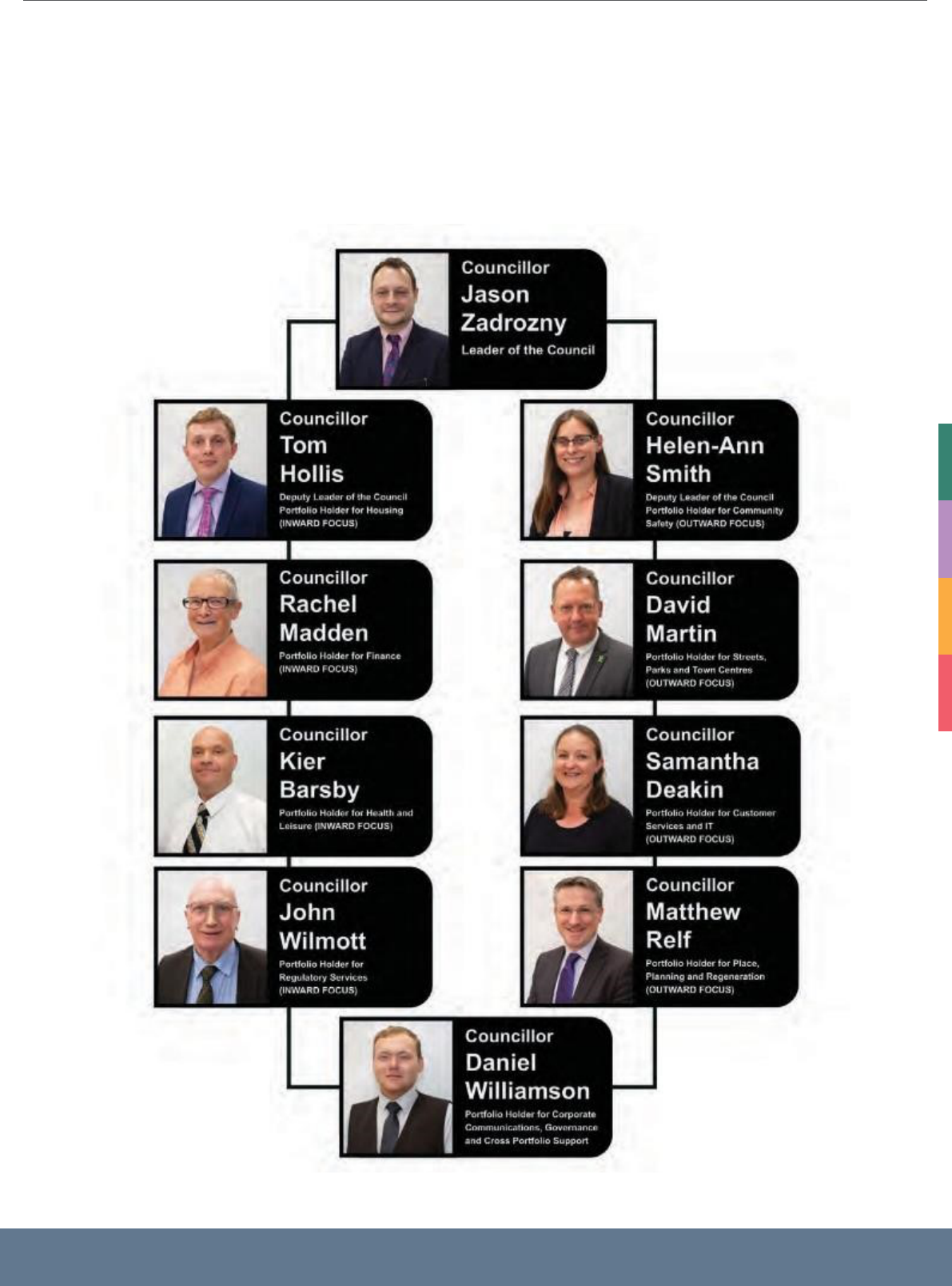
STATEMENT OF ACOUNTS 2020
-
2021
1 4
8. ORGANISATIONAL DELIVERY
The Council consists of 35 Councillors, controlled by the Ashfield Independents (28) with 3
Conservative, 2 non-aligned and 2 Labour Councillors. The Council’s Cabinet comprises of ten
Councillors:

STATEMENT OF ACOUNTS 2020
-
2021
1 5
Within Ashfield there are two parishes, Selston Parish Council and
Annesley & Felley Parish Council who provide additional services to
residents within their respective boundaries. The JUS-t Neighbourhood
Plan was made for a substantial part of the Parish of Selston following a
referendum in October 2017. Currently no neighbourhood plan has been
adopted by Annesley & Felley Parish Council.
The Teversal, Stanton Hill and Skegby Neighbourhood Forum brought
forward a Neighbourhood Plan for Teversal, Stanton Hill and Skegby,
which was also made in October 2017. The Forum was re-designated for
a further five years following a decision of the Cabinet on 27th January
2020.
MANAGEMENT STRUCTURE AND WORKFORCE
The Council’s management structure – the Corporate Leadership Team
(CLT) is documented in the Council’s Constitution and is comprised of
the Chief Executive, four Directors and the Corporate Finance Manager
(& Section 151 Officer). The CLT is responsible for implementing the
Council’s strategic goals as determined by elected Members, and for the
effective operational delivery and management of Council services.
As at 31st March 2021 the Council’s workforce comprised 592 employees
in post (540.19 full time equivalent posts) on the approved staffing
establishment.
KEY PARTNERING ARRANGEMENTS
Ashfield District Council has key working relationships with the following
organisations:
• Mansfield District Council and Newark & Sherwood District Council for
owning and operating the Mansfield Crematorium.
• Mansfield District Council for delivering shared services across both
authorities (Human Resources & Payroll and Legal Services).
• Ashfield District Council is the Lead Partner for the Rough Sleeper
Initiative funding/service.
• Mansfield District Council – Home Options Partnership
• Mansfield District Council and Newark & Sherwood District Council –
Private Sector Landlord Forum
• Broxtowe Borough Council sharing an Estates Manager, whilst Ashfield
provides Business Rates processing support to Broxtowe.
• J. Tomlinson Ltd, our delivery partner for completing capital
improvements to the Council’s housing stock.
• Nottingham City Homes for the Lifeline Service.
•
Sport & Leisure Management Ltd for operating the Council’s leisure centres.
• Nottingham City Council for provision of Procurement services.
• Central Midlands Audit Partnership (CMAP) for the provision of our
Internal Audit function.
• Erewash Borough Council for the provision of our Building Control
function.
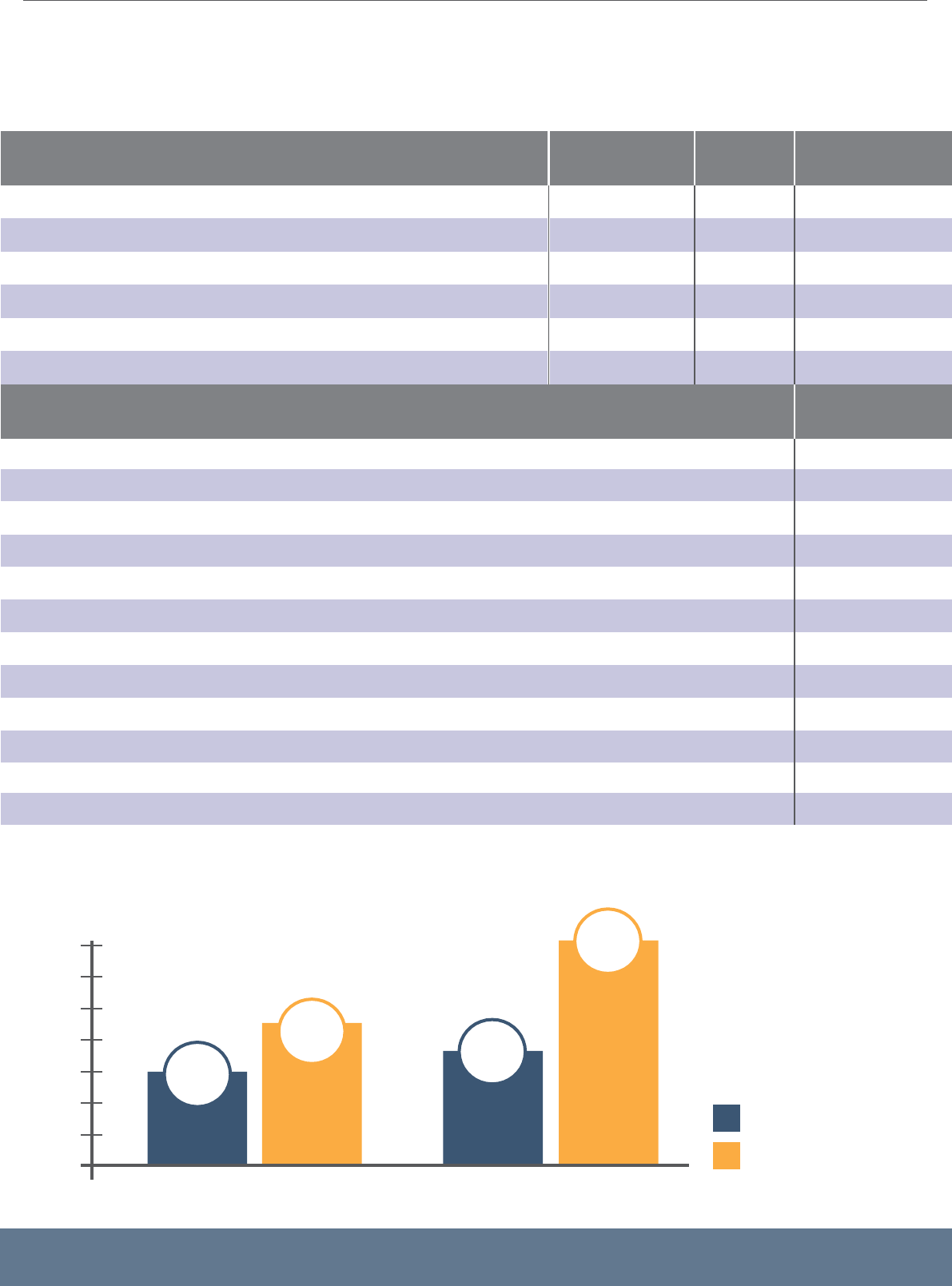
STATEMENT OF ACOUNTS 2020
-
2021
1 6
9.
FINANCIAL PERFORMANCE
2020/21
GENERAL FUND REVENUE OUTTURN
The General Fund supports the day to day running of the Council’s services, excluding Council Housing provision.
Directorate
Revised
Budget £’000
Outturn
£’000
Variance
£’000
Chief Executive
540
536
(4)
Resources & Business Transformation
958
(1,730)
(2,688)
Legal & Governance
1,809
1,654
(155)
Place & Communities
10,338
8,392
(1,946)
Housing & Assets
2,277
2,129
(148)
Net Cost of Services
15,922
10,981
(4,941)
Key Variance Explanations:
Unallocated Covid funding (service related)
(1,198)
Unallocated Covid funding (support for individuals)
(1,146)
Unused budgeted transfers from earmarked reserves
(427)
New Burdens funding not utilised in 2020/21
(550)
Towns Fund and Future High Streets Capacity Funding to be used in 2022/23
(313)
Unbudgeted Investment Property Income
(250)
Housing Benefit Losses
250
Increased Planning income
(325)
Salaries and wages savings
(564)
Transport related savings
(269)
Unspent Homelessness Support and Syrian Vulnerable Persons Grant
(141)
Other net Costs/Savings
(8)
GENERAL FUND RESERVES
–
CHANGE 2019/20 TO 2020/21
GENERAL FUND RESERVES
(
£M
)
14
12
10
14,250
(4,941)
8
6 6,713
4
2
9,670
7,901
General Reserve
Earmarked
O
2019/20 2020/21
Reserves
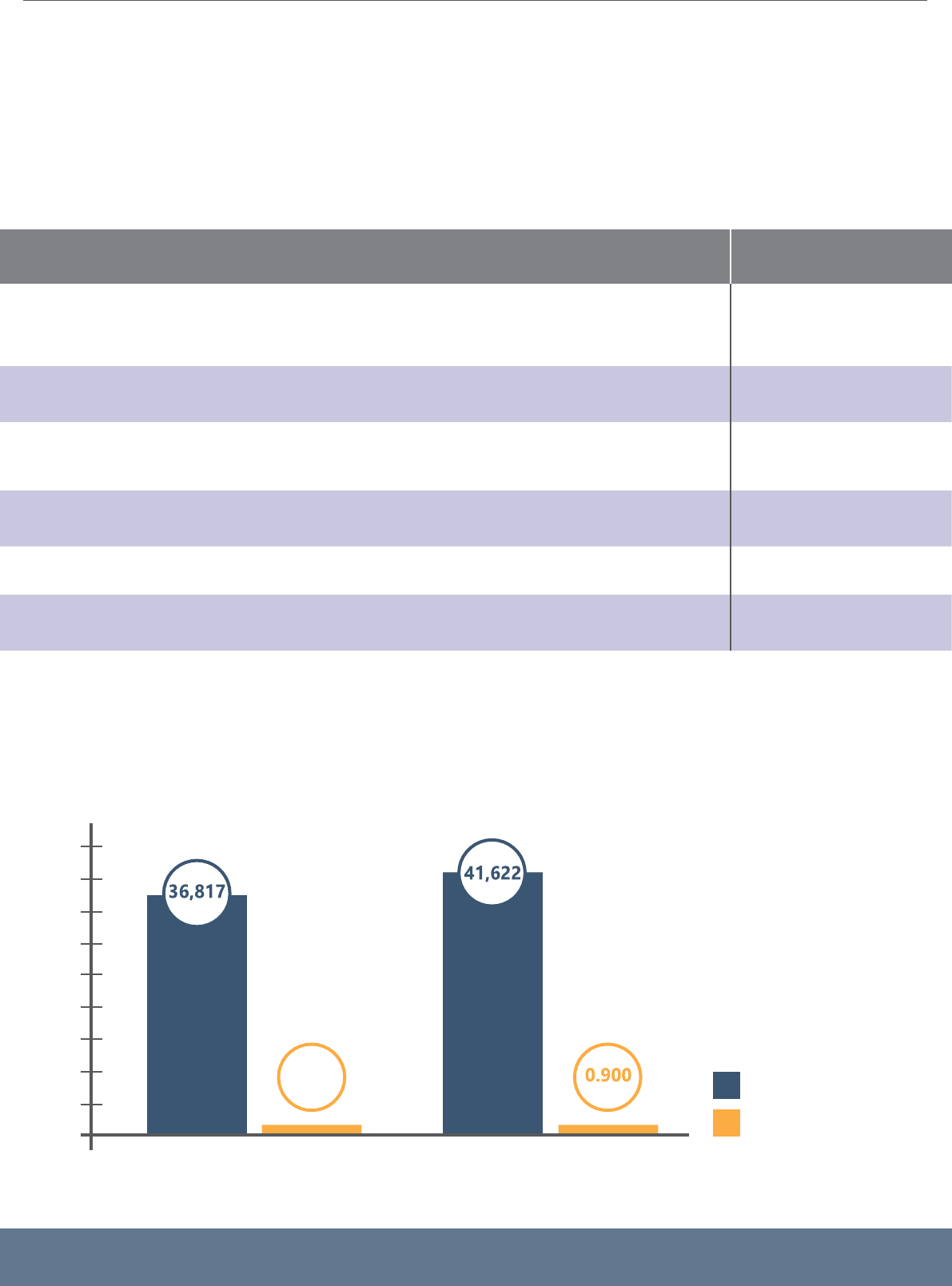
STATEMENT OF ACOUNTS 2020
-
2021
1 7
HOUSING REVENUE ACCOUNT
(
HRA
)
The HRA is a ring-fenced landlord’s account for the management and maintenance of the Council’s housing
stock. This account funds both day to day revenue costs as well as funding borrowing costs for capital work
to maintain and improve council properties.
HRA OUTTURN 2020/2021
Compared to the 2020/21 revised budget the HRA achieved savings of £1.777m, these are shown in the
Table below:
£’000
Reduced income from closure of Community Centres and home
improvement/garden maintenance due to the Covid restrictions.
Reduced Interest rates in the banking sector reduced the average annual
interest rate on the HRA balances.
Reduced repairs and maintenance and staffing expenditure attributable to a
reduction in repairs due to the Covid restrictions.
Reduced contribution to bad debt provision
Reduced capital expenditure largely due to the delay in new vehicle delivery.
Other various minor variances (net)
50
141
(1,220)
(119)
(656)
27
(1,777)
HRA RESERVES
–
CHANGE 2019/20 TO 2020/21
HRA RESERVES
(
£M
)
45
40
35
30
25
20
15
10
5
O
General Reserve
Earmarked
Reserves
Further information relating to the Housing Revenue Account can be found within the Supplementary
Financial Statements.
0.944
2019/20
2020/21

STATEMENT OF ACOUNTS 2020
-
2021
1 8
Capital Spending 2020/21
i
r
Capital monies are spent on
building or enhancing the
Council’s asset base. There are
rules and regulations regarding
what can be classed as capital
expenditure and this expenditure
must be financed separately from
the day to day running costs of
the Council. During 2020/21 the
Council spent £11.8m on capital
works. Key projects were:
NEW KIRKBY LEISURE CENTRE
Almost £1m was spent on the
new Leisure Centre at Kirkby, the
building of which commenced in
late 2020/21.
PARKS AND OPEN SPACES
Over £1m capital funding has
been spent on Parks and Open
Spaces infrastructure across the
whole District during 2020/21.
DISABLED FACILITIES GRANTS
The Council spent £691k to meet
the statutory duty to provide
Mandatory Disabled Facilities
Grants to qualifying applicants
under the Housing Grants
Construction and Regeneration
Act 1996. These grants provide
the funds for adaptations to
modify environments to restore
or enable independent living,
privacy, confidence and dignity
for individuals and their families
in non-Council dwellings.
INVESTMENT PROPERTY
ACQUISITION
£3.3m was spent on the
acquisition of an investment
property in April 2020. The
Council has since taken a decision
not to acquire any further
nvestment properties (unless for
egeneration purposes within the
District) following the outcome
of the consultation undertaken
in 2020 which would now restrict
access to Public Works Loan
Board funding as a borrowing
source should this acquisition
strategy continue.
HOUSING PROJECTS
£5.1m was spent in 2020/21
on improvements to Council
dwellings throughout the District
ensuring that the Decent Homes
Standard is maintained and on
the other projects including the
acquisition of houses to add to
the Council’s stock to help meet
the social housing demands of
our residents and undertaking
disabled adaptations to Council
properties.
Balance Sheet
PROPERTY, PLANT &
EQUIPMENT
(
PPE
)
The value of PPE increased by
£6.239m to £303.612m as at
31st March 2021. This increase is
due to increases in revaluations
(mainly to the leisure centres)
and new additions exceeding
depreciation, disposals and
impairment in the year.
Council dwellings are valued
utilising the East Midland
Adjustment Factor, as required
by Government. This Adjustment
Factor reduces the value of
social housing from the market
level to a level which reflects the
Government’s assessment of
valuation, taking account of ‘right
to buy’ and other factors.
INVESTMENT PROPERTIES &
ASSETS HELD FOR SALE
The overall value of Investment
Properties decreased in year by
£2.4m. This decrease was due to
valuation reductions of £5.8m
across the portfolio which were
partially offset by the £3.3m
purchase of one investment
property in April 2021. The Asset
Held for Sale value decreased
by £0.7m in the year; this was
largely due to the transfer out of
this category of the Brook Street,
Sutton in Ashfield.
LONG TERM PROVISIONS
The value of Long Term provisions
increased by £150k to £2.485m at
the end of March 2021. The main
provision within this is £2.154m in
respect of Business Rates appeals.
PENSION LIABILITY
The Council is a member of the
Nottinghamshire County Council
Pension Fund. The Pension
Liability increased by £31.193m
to £124.085m at 31st March
2021 largely due to changes
to the financial assumptions of
a lower discount rate and an
increased inflation rate in line
with economic information, as
advised by Barnett Waddingham,
the Council’s Pensions Actuary,
both of which increase the
pension liability. The increase in
liability due to the changes in the
financial assumptions is partly
offset by investment returns
by the Fund and the pension
payments made during 2020/21.

STATEMENT OF ACOUNTS 2020
-
2021
1 9
10. OUTLOOK
BUDGETS AND FUNDING
There is significant uncertainty
about the level of funding the
Council will receive beyond
2021/22 pending the outcome
and impact of the following:
• The impact of and recovery from
the Covid-19 pandemic;
• The next Spending Review;
• Fair Funding Review;
• Business Rates – future levels of
retention and clarification of what
will happen around the baseline
re-set; and
• Future of New Homes Bonus
funding and distribution
methodology
It is anticipated that a key
outcome of the above will be
a redistribution of resources
to address the national social
care pressure in both Adults’
and Children’s services and as
District Councils do not provide
these services, District Councils’
resources will reduce.
Ashfield District Council, like
most Councils, receives support
from Local Government Futures
(LG Futures) and has used their
resource forecasting model
and the Council’s own forecast
expenditure requirements to
estimate the anticipated funding
gap for the next four financial
years. Notwithstanding the
uncertainty brought about by
the aforementioned factors, the
estimated cumulative funding
gap from 2022/23 to 2025/26 is
£3m with the largest proportion
of this (£2.46m) front-loaded into
2022/23.
As set out in the Council’s
2021/22 Budget Setting Report
robust plans are in place to
identify options and implement
actions to address the future
estimated financial challenge. This
includes a line by line review of
all of the Council’s budgets and
Medium Term Financial Strategy
(MTFS) assumptions; a review
of fees and charges and income
generating opportunities; a review
of procurement and contracting
arrangements; a review of services
and future service delivery
options; and delivery of financial
efficiencies from the investment
in technology via the Council’s
Digital Transformation Strategy.
It also includes progressing at
a pace the development and
delivery of our Local Plan clearly
setting out our aspirations for the
District in terms of where we want
to see both business and homes
growth, and attract developers
to help deliver that vision. The
Corporate Leadership Team
and the Council’s Cabinet meet
frequently to progress this work.
The Council has a strong track
record of setting a balanced
and deliverable budget and this
robust approach will continue
with the future development of
the MTFS to ensure the Council’s
ongoing financial sustainability.
The Medium Term Financial
Strategy will be updated and
re-presented to Cabinet in
Autumn 2021 to reflect the
2020/21 Outturn and progress on
identifying savings to help close
the estimated funding gap.
CAPITAL INVESTMENT
Recent announcements made by
Government to invest £62.6m in
Kirkby and Sutton from the Towns
Fund and over £6.27m from
the Future High Streets Fund,
coupled with our own significant
investment plans for our leisure
provision which are currently
being delivered at a pace, will
bring about new opportunities for
the whole District. The investment
will deliver jobs and further
education opportunities, long-
term economic and productivity
growth, new homes, improved
transport infrastructure, reduced
carbon and new cultural and
visitor facilities.

STATEMENT OF ACOUNTS 2020
-
2021
20
11. EXPLANATION
OF THE FINANCIAL STATEMENTS
The Statement of Accounts is for the financial year 31st March 2021 and as required
by the Code, comprises of Core and Supplementary Statements, together with
Disclosure Notes. The style and format of the Accounts complies with the local
authority accounting standards.
The Core Financial Statements
COMPREHENSIVE INCOME AND EXPENDITURE
STATEMENT
(
CIES
)
This Statement records all of the Council’s income
and expenditure for the year. It includes both the
amounts spent on local taxpayer services and
also local rent payer services. The top half of the
statement provides analysis of spend by Directorate
on services that the Council is required to undertake
by law (statutory duties such as street cleansing,
planning and registration) and discretionary
services focussed on local priorities and need. The
bottom half of the statement deals with corporate
transactions and funding.
MOVEMENT IN RESERVES STATEMENT
(
MIRS
)
This statement summarises the movement in year
on the Council’s different reserves. These reserves
are analysed into ‘useable reserves’ (i.e. those that
can be used to fund expenditure or reduce local
taxation) and ‘unusable reserves’ which must be set
THE COLLECTION FUND
aside for specific purposes (as they relate to gains
and losses on statutory adjustment accounts).
BALANCE SHEET
The Balance Sheet is a ‘snapshot’ of the Council’s
financial position at the end of March 2021. It shows
the Council’s assets, liabilities, cash balances and
reserves at 31st March 2021.
CASH FLOW STATEMENT
The Cash Flow Statement shows the reasons for
changes in the Council’s cash balances during the
year, and whether the change is due to operating
activities (day to day costs), new investments, or
financing activities (such as repayment of borrowing
and other long term liabilities).
The Supplementary Financial Statements
HOUSING REVENUE ACCOUNT
(
HRA
)
This Account separately identifies expenditure
incurred in the provision, management and
maintenance of the Council’s housing stock and
demonstrates how this has been funded from rents,
service charges and other income. In accordance
with the Local Government and Housing Act 1989
this is maintained as a separate account and must
operate with a positive working balance.
The Collection Fund details all monies due from
Council Tax and Non Domestic Rate payers and
redistribution of some of these payments to other
organisations on whose behalf the Council collects
these taxes including the County Council and the
Nottinghamshire Police and Crime Commissioner
and Fire & Rescue Authorities.

Annual Governance Statement (AGS)
This Statement sets out the Council’s governance
structures and its key internal controls.
Other Key Sections in the Statement
of Accounts
STATEMENT OF RESPONSIBILITIES
This Statement sets out the respective
responsibilities of the Council and the Chief
Finance Officer.
ACCOUNTING POLICIES
These Policies explain the treatment and basis
of the figures in the accounts in accordance with
proper accounting practices.
NOTES TO THE FINANCIAL STATEMENTS
These provide additional information on important
points included in the Core Financial Statements.
EXPENDITURE AND FUNDING ANALYSIS
(
EFA
)
This Statement shows how annual expenditure
is used and funded from Council resources in
comparison with how those resources are consumed
or earned by the Council. It also shows how this
expenditure is allocated for decision making
purposes across the Council’s Directorates.
GLOSSARY OF TERMS AND ABBREVIATIONS
Key terms used throughout this Statement of
Accounts are more fully explained.
FURTHER INFORMATION
If you require further information concerning
the Council’s 2020/21 Accounts please contact:
The Corporate Finance Manager
Ashfield District Council
Urban Road,
Kirkby in Ashfield,
Nottinghamshire
NG17 8DA
Telephone: 01623 457362 or
Email:
Pete.Hudson@ashfield.gov.uk
STATEMENT OF ACOUNTS 2020
-
2021 2 1

STATEMENT OF ACOUNTS 2020
-
2021
2 2
THE STATEMENT OF
RESPONSIBILITIES FOR
THE STATEMENT OF ACCOUNTS
RESPONSIBILITIES OF THE COUNCIL
The Council is required to:
• Make arrangements for the proper administration of its financial affairs and to ensure that one of its
officers has the responsibility for the administration of those affairs. In this Council, that officer is the
Corporate Finance Manager;
• Manage its affairs to secure economic, efficient and effective use of resources and safeguard its assets;
• Approve the Statement of Accounts.
I confirm that the Financial Statements were approved by the Audit Committee meeting held on 18th
October 2021.
Signed on behalf of Ashfield District Council:
Councillor D. Walters
Chairman of the Audit Committee
RESPONSIBILITIES OF THE CORPORATE FINANCE MANAGER
The Corporate Finance Manager is responsible for the preparation of the Council’s statement of accounts
in accordance with proper practices as set out in the CIPFA/LASAAC Code of Practice on Local Authority
Accounting in the United Kingdom 2020/21 (“the Code of Practice”).
In preparing this Statement of Accounts, the Corporate Finance Manager has:
• Selected suitable accounting policies and then applied them consistently;
• Made judgements and estimates that were reasonable and prudent;
• Complied with the Code of Practice.
The Corporate Finance Manager has also
• Kept proper, up to date accounting records;
• Taken reasonable steps for the prevention and detection of fraud and other irregularities.
I confirm that the Statement of Accounts presents a true and fair view of the financial position of the
Council at the accounting date and its income and expenditure for the year ended 31st March 2021
P. Hudson, ACMA, CGMA
Corporate Finance Manager & Section 151 Officer
17th December 2021

STATEMENT OF ACOUNTS 2020
-
2021
23
AUDIT CERTIFICATE
AND OPINION
INDEPENDENT AUDITOR’S REPORT TO THE MEMBERS OF ASHFIELD DISTRICT COUNCIL
Report on the audit of the financial statements
Opinion on the financial statements
We have audited the financial statements of Ashfield District Council (“the Council) for the year ended 31 March 2021, which
comprise the Comprehensive Income and Expenditure Statement, the Movement in Reserves Statement, the Balance Sheet, the
Cash Flow Statement, the Housing Revenue Account – Income and Expenditure Statement, the Collection Fund and notes to the
financial statements, including a summary of significant accounting policies. The financial reporting framework that has been applied
in their preparation is applicable law and the CIPFA/LASAAC Code of Practice on Local Authority Accounting in the United Kingdom
2020/21.
In our opinion, the financial statements:
• give a true and fair view of the financial position of the Council as at 31
st
March 2021 and of its expenditure and income
for the year then ended; and
• have been properly prepared in accordance with the CIPFA/LASAAC Code of Practice on Local Authority Accounting in
the United Kingdom 2020/21.
Basis for opinion
We conducted our audit in accordance with International Standards on Auditing (UK) (ISAs (UK)) and applicable law. Our
responsibilities under those standards are further described in the Auditor’s responsibilities section of our report. We are
independent of the Council in accordance with the ethical requirements that are relevant to our audit of the financial statements in
the UK, including the FRC’s Ethical Standard, and we have fulfilled our other ethical responsibilities in accordance with these
requirements. We believe that the audit evidence we have obtained is sufficient and appropriate to provide a basis for our opinion.
Emphasis of Matter – Effect of the Covid-19 pandemic on the valuation of Investment property assets
We draw attention to Note 2 of the financial statements, which describes the effects of the Covid-19 pandemic on the valuation of
the Council’s investment property assets. As disclosed in Note 2 of the financial statements, the Council’s valuers included a
‘material valuation uncertainty’ declaration within their report as a result of the Covid-19 pandemic. Our opinion is not modified in
respect of this matter.
Conclusions relating to going concern
In auditing the financial statements, we have concluded that the Corporate Finance Manager’s (& S151 Officer) of the going concern
basis of accounting in the preparation of the financial statements is appropriate.
Based on the work we have performed, we have not identified any material uncertainties relating to events or conditions that,
individually or collectively, may cast significant doubt on the Council's ability to continue as a going concern for a period of at least
twelve months from when the financial statements are authorised for issue.
Our responsibilities and the responsibilities of the Corporate Finance Manager’s (& S151 Officer) with respect to going concern are
described in the relevant sections of this report.

STATEMENT OF ACOUNTS 2020
-
2021
24
Other information
The Corporate Finance Manager’s (& S151 Officer) is responsible for the other information. The other information comprises the
information included in the Statement of Accounts, other than the financial statements and our auditor’s report thereon. Our opinion
on the financial statements does not cover the other information and, except to the extent otherwise explicitly stated in our report,
we do not express any form of assurance conclusion thereon.
In connection with our audit of the financial statements, our responsibility is to read the other information and, in doing so, consider
whether the other information is materially inconsistent with the financial statements or our knowledge obtained in the audit or
otherwise appears to be materially misstated. If we identify such material inconsistencies or apparent material misstatements, we
are required to determine whether there is a material misstatement in the financial statements or a material misstatement of the
other information. If, based on the work we have performed, we conclude that there is a material misstatement of this other
information, we are required to report that fact.
We have nothing to report in this regard.
Responsibilities of the Corporate Finance Manager (& S151 Officer) for the financial statements
As explained more fully in the Statement of the Corporate Finance Manager’s (& S151 Officer) Responsibilities, the Corporate
Finance Manager (& S151 Officer) is responsible for the preparation of the Statement of Accounts, which includes the financial
statements, in accordance with proper practices as set out in the CIPFA/LASAAC Code of Practice on Local Authority Accounting
in the United Kingdom 2020/21, and for being satisfied that they give a true and fair view. The Corporate Finance Manager (& S151
Officer) is also responsible for such internal control as the Corporate Finance Manager (& S151 Officer) determines is necessary
to enable the preparation of financial statements that are free from material misstatement, whether due to fraud or error.
The Corporate Finance Manager (& S151 Officer) is required to comply with the CIPFA/LASAAC Code of Practice on Local Authority
Accounting in the United Kingdom 2020/21 and prepare the financial statements on a going concern basis on the assumption that
the functions of the Council will continue in operational existence for the foreseeable future. The Corporate Finance Manager (&
S151 Officer) is responsible for assessing each year whether or not it is appropriate for the Council to prepare its accounts on the
going concern basis and disclosing, as applicable, matters related to going concern.
Auditor’s responsibilities for the audit of the financial statements
Our objectives are to obtain reasonable assurance about whether the financial statements as a whole are free from material
misstatement, whether due to fraud or error, and to issue an auditor’s report that includes our opinion. Reasonable assurance is a
high level of assurance but is not a guarantee that an audit conducted in accordance with ISAs (UK) will always detect a material
misstatement when it exists. Misstatements can arise from fraud or error and are considered material if, individually or in the
aggregate, they could reasonably be expected to influence the economic decisions of users taken on the basis of these financial
statements.
Irregularities, including fraud, are instances of non-compliance with laws and regulations. We design procedures in line with our
responsibilities, outlined above, to detect material misstatements in respect of irregularities, including fraud. Based on our
understanding of the Council, we identified that the principal risks of non-compliance with laws and regulations related to the Local
Government Act 2003 (and associated regulations made under section 21), the Local Government Finance Acts of 1988, 1992 and
2012, the Local Government and Housing Act 1989 and the Accounts and Audit Regulations 2015, and we considered the extent
to which non-compliance might have a material effect on the financial statements.
We evaluated the Corporate Finance Manager’s (& S151 Officer) incentives and opportunities for fraudulent manipulation of the
financial statements (including the risk of override of controls) and determined that the principal risks were related to posting manual
journal entries to manipulate financial performance, management bias through judgements and assumptions in significant
accounting estimates and significant one-off or unusual transactions.
Our audit procedures were designed to respond to those identified risks, including non-compliance with laws and regulations
(irregularities) and fraud that are material to the financial statements. Our audit procedures included but were not limited to:
• discussing with management and the Audit Committee the policies and procedures regarding compliance with laws and
regulations;
• communicating identified laws and regulations throughout our engagement team and remaining alert to any indications of
non-compliance throughout our audit; and
• considering the risk of acts by the Council which were contrary to applicable laws and regulations, including fraud.

STATEMENT OF ACOUNTS 2020
-
2021
25
Our audit procedures in relation to fraud included but were not limited to:
• making enquiries of management and the Audit Committee on whether they had knowledge of any actual, suspected or
alleged fraud;
• gaining an understanding of the internal controls established to mitigate risks related to fraud;
• discussing amongst the engagement team the risks of fraud; and
• addressing the risks of fraud through management override of controls by performing journal entry testing.
There are inherent limitations in the audit procedures described above and the primary responsibility for the prevention and
detection of irregularities including fraud rests with management and the Audit Committee. As with any audit, there remained a risk
of non-detection of irregularities, as these may involve collusion, forgery, intentional omissions, misrepresentations or the override
of internal controls.
We are also required to conclude on whether the Corporate Finance Manager’s (& S151 Officer) use of the going concern basis of
accounting in the preparation of the financial statements is appropriate. We performed our work in accordance with Practice Note
10: Audit of financial statement and regularity of public sector bodies in the United Kingdom, and Supplementary Guidance Note
01, issued by the National Audit Office in April 2021.
A further description of our responsibilities for the audit of the financial statements is located on the Financial Reporting Council’s
website at www.frc.org.uk/auditorsresponsibilities. This description forms part of our auditor’s report.
Report on the Council’s arrangements for securing economy, efficiency and effectiveness in its
use of resources
Matter on which we are required to report by exception
We are required to report to you if, in our opinion, we are not satisfied that the Council has made proper arrangements for securing
economy, efficiency and effectiveness in its use of resources for the year ended 31 March 2021.
We have not completed our work on the Council’s arrangements. On the basis of our work to date, having regard to the guidance
issued by the Comptroller and Auditor General in April 2021, we have not identified any significant weaknesses in arrangements
for the year ended 31 March 2021.
We will report the outcome of our work on the Council’s arrangements in our commentary on those arrangements within the Auditor’s
Annual Report. Our audit completion certificate will set out any matters which we are required to report by exception.
Responsibilities of the Council
The Council is responsible for putting in place proper arrangements to secure economy, efficiency and effectiveness in its use of
resources, to ensure proper stewardship and governance, and to review regularly the adequacy and effectiveness of these
arrangements.
Auditor’s responsibilities for the review of arrangements for securing economy, efficiency and effectiveness in the use of
resources
We are required under section 20(1)(c) of the Local Audit and Accountability Act 2014 to satisfy ourselves that the Council has
made proper arrangements for securing economy, efficiency and effectiveness in its use of resources. We are not required to
consider, nor have we considered, whether all aspects of the Council’s arrangements for securing economy, efficiency and
effectiveness in its use of resources are operating effectively.
We have undertaken our work in accordance with the Code of Audit Practice, having regard to the guidance issued by the
Comptroller and Auditor General in April 2021.
Matters on which we are required to report by exception under the Code of Audit Practice
We are required by the Code of Audit Practice to report to you if:
• we issue a report in the public interest under section 24 of the Local Audit and Accountability Act 2014;
• we make a recommendation under section 24 of the Local Audit and Accountability Act 2014; or
• we exercise any other special powers of the auditor under sections 28, 29 or 31 of the Local Audit and Accountability Act
2014.

STATEMENT OF ACOUNTS 2020
-
2021
26
We have nothing to report in these respects.
Use of the audit report
This report is made solely to the members of Ashfield District Council, as a body, in accordance with part 5 of the Local Audit and
Accountability Act 2014 and as set out in paragraph 44 of the Statement of Responsibilities of Auditors and Audited Bodies
published by Public Sector Audit Appointments Limited. Our audit work has been undertaken so that we might state to the members
of the Council those matters we are required to state to them in an auditor’s report and for no other purpose. To the fullest extent
permitted by law, we do not accept or assume responsibility to anyone other than the members of the Council, as a body, for our
audit work, for this report, or for the opinions we have formed.
Delay in certification of completion of the audit
We cannot formally conclude the audit and issue an audit certificate until we have completed:
• the work necessary to issue our assurance statement in respect of the Council’s Whole of Government Accounts
consolidation pack; and
• the work necessary to satisfy ourselves that the Council has made proper arrangements for securing economy, efficiency
and effectiveness in its use of resources.
David Hoose, Key Audit Partner
For and on behalf of Mazars LLP
Park View House
58 The Ropewalk
Nottingham
NG1 5DW
20 December 2021

STATEMENT OF ACOUNTS 2020
-
2021
2 7
STATEMENT OF
ACCOUNTING POLICIES
1. GENERAL PRINCIPLES
The Statement of Accounts summarises the Council’s transactions for the financial year 2020/21 and its
position at the year-end 31st March 2021. The Council is required to prepare an annual Statement of
Accounts by the Accounts and Audit Regulations 2015. These Regulations require the accounts to be
prepared in accordance with proper accounting practices. These practices under Section 21 of the 2003 Act
primarily comprise of the Code of Practice on Local Authority Accounting in the United Kingdom 2020/21
and International Financial Reporting Standards (IFRS).
The accounting convention adopted in the Statement of Accounts is principally historical cost, modified by
the revaluation of certain categories of non-current assets and financial instruments.
2. ACCRUALS OF INCOME AND EXPENDITURE
Activity is accounted for in the year that it takes place, not simply when cash payments are made or
received. In particular:
• Revenue from contracts with service recipients, whether for services or the provision of goods, is
recognised when (or as) the goods or services are transferred to the service recipient in accordance with
the performance obligations in the contract.
• Supplies are recorded as expenditure when they are consumed; where there is a gap between the date
supplies are received and their consumption, they are carried as inventories on the Balance Sheet;
• Expenses in relation to services received (including services provided by employees) are recorded as
expenditure when the services are received rather than when payments are made;
• Interest receivable on investments and payable on borrowings is accounted for respectively as income and
expenditure on the basis of the effective interest rate for the relevant financial instrument rather than the
cash flows fixed or determined by the contract.
• Where revenue and expenditure have been recognised but cash has not been received or paid, a debtor
or creditor for the relevant amount is recorded in the Balance Sheet. Where debts may not be settled,
the balance of debtors is written down and a charge made to revenue for the income that might not be
collected.
3. CASH AND CASH EQUIVALENTS
Cash is represented by cash in hand and deposits with financial institutions repayable without penalty on
notice of not more than one working day.
Cash Equivalents are highly liquid investments that mature in 3 months or less from the date of acquisition
and that are readily convertible to known amounts of cash with insignificant risk of change in value.
In the cash flow statement, cash and cash equivalents are shown net of any bank overdrafts that are
repayable on demand and form an integral part of the Council’s cash management.

STATEMENT OF ACOUNTS 2020
-
2021
28
4. EXCEPTIONAL ITEMS
When items of income and expenditure are material, their nature and amount is disclosed separately, either
on the face of the Comprehensive Income and Expenditure Statement or in the notes to the accounts,
depending on how significant the items are to an understanding of the Council’s financial performance.
5. PRIOR PERIOD ADJUSTMENTS, CHANGES IN ACCOUNTING POLICIES AND ESTIMATES AND
ERRORS
Prior period adjustments may arise as a result of a change in accounting policies or to correct a material
error. Changes in accounting estimates are accounted for prospectively, i.e. in the current and future years
affected by the change and do not give rise to a prior period adjustment.
Changes in accounting policies are only made when required by proper accounting practices or the change
provides more reliable or relevant information about the effect of transactions, other events and conditions
on the Council’s financial position or financial performance. Where a change is made, it is applied
retrospectively (unless stated otherwise) by adjusting opening balances and comparative amounts for the
prior period as if the new policy had always been applied.
Material errors discovered in prior period figures are corrected retrospectively by amending opening
balances and comparative amounts for the prior period.
6. CHARGES TO REVENUE FOR NON
-
CURRENT ASSETS
Service revenue accounts, support services and trading accounts are charged with the following amounts to
record the real cost of holding non-current assets during the year:
• Depreciation attributable to the assets used by the relevant service.
• Revaluation and impairment losses on assets used by the service where there are no accumulated gains in
the Revaluation Reserves against which the losses can be written off.
• Amortisation of intangible assets attributable to the service.
The Council is not required to raise Council Tax to cover depreciation, revaluation and impairment losses
or amortisations. However, it is required to make an annual provision from revenue to contribute towards
the reduction in its overall borrowing requirement equal to an amount calculated on a prudent basis
determined by the Council in accordance with statutory guidance. Depreciation, revaluation, impairment
losses and amortisation are therefore replaced by the contribution in the General Fund Balance by way of
an adjusting transaction with the Capital Adjustment Account in the Movement in Reserves Statement for
the difference between the two.
7. EMPLOYEE BENEFITS
A. BENEFITS PAYABLE DURING EMPLOYMENT
Short-term employee benefits are those due to be settled within 12 months of the year-end. They include
such benefits as wages and salaries, paid annual leave and paid sick leave, bonuses and accumulated flexi
time for current employees and are recognised as an expense for the services in the year in which the
employees render service to the Council. An accrual is made for the cost of holiday entitlements etc. earned
by employees but not taken before the year-end, which employees can carry forward into the next financial
year. The accrual is made at the wage and salary rates applicable the following accounting year, being
the period in which the employee takes the benefit. The accrual is charged to Surplus and Deficit on the
Provision of Services, but then reversed out through the Movement in Reserves Statement so that holiday
benefits are charged to revenue in the financial year in which the holiday absence occurs.

B. TERMINATION BENEFITS
Termination benefits are amounts payable as a result of a decision by the Council to terminate an officer’s
employment before the normal retirement date or an officer’s decision to accept voluntary redundancy in
exchange for those benefits. These are charged on an accruals basis to the Non Distributed Costs line in the
Comprehensive Income and Expenditure Statement when the Council can no longer withdraw the offer of
those benefits or when the Council recognises costs for a restructuring.
Where termination benefits involve the enhancement of pensions, statutory provisions require the General
Fund Balance to be charged with the amount payable by the Council to the pension fund or pensioner in
the year, not the amount calculated according to the relevant accounting standards. In the Movement in
Reserves Statement, appropriations are required to and from the Pensions Reserve to remove the notional
debits and credits for pension enhancement termination benefits and replace them with debits for the cash
paid to the pension fund and pensioners and any such amounts payable but unpaid at the year-end.
C. POST EMPLOYMENT BENEFITS
Most employees of the Council contribute to the Nottinghamshire Pension Fund, the Local Government
Pension Scheme administered by Nottinghamshire County Council. The scheme provides defined benefits
(retirement lump sums and pensions) earned as employees work for the Council.
The Nottinghamshire Pension Fund is accounted for as a defined benefit scheme:
• The liabilities of Nottinghamshire Pension Fund attributable to the Council are included in the Balance
Sheet on an actuarial basis using the projected unit method, i.e. an assessment of the future payments
that will be made in relation to retirement benefits earned to date by employees, based on assumptions
including mortality rates, employee turnover rates and projections of projected earnings for current
employees.
• Liabilities are discounted to their value at current prices using a discount rate based on an appropriate
rate of return on high quality corporate bonds.
• The assets of the Fund attributable to the Council are included in the Balance Sheet at their fair value.
a) Quoted securities – current bid price
b) Unquoted securities – professional estimate
c) Unitised securities – current bid price
d) Property – market value
STATEMENT OF ACOUNTS 2020
-
2021 2 9

STATEMENT OF ACOUNTS 2020
-
2021
30
The change in the net pension liability is analysed into the following components:
• Service Cost comprising
a) Current Service Cost - the increase in liabilities as result of years of service earned this year - allocated in
the Comprehensive Income and Expenditure Account to the services for which the employees worked
b) Past Service cost - the increase in liabilities as a result of a scheme amendment or curtailment whose
effect relates to years of service earned in earlier years - debited to the Surplus or Deficit on Provision of
Services in the Comprehensive Income and Expenditure Account as part of Non-Distributed Costs
c) Net interest on the net defined liability (asset), i.e. the net interest expense for the Council – the change
during the period in the net defined benefit liability (asset) that arises from the passage of time charged to
the Financing and Investment Income and Expenditure line of the Comprehensive Income and Expenditure
Statement – this is calculated by applying the discount rate used to measure the defined benefit obligation
at the beginning of the period to the net defined benefit liability (asset) at the beginning of the period –
taking into account any changes in the net defined benefit liability (asset) during the period as a result of
contribution and benefit payments
d) Re-measurement comprising:
• the return on plan assets – excluding amounts included in net interest on the defined benefit liability
(asset) – charged to the Pensions Reserve as Other Comprehensive Income and Expenditure
• actuarial gains and losses - changes in the net pension liability that arise because events have not
coincided with assumptions made at the last actuarial valuation or because the actuaries have updated
their assumptions – charged to the Pensions Reserve as Other Comprehensive Income and Expenditure.
e) Contributions paid to Nottinghamshire Pension
Fund - Cash paid as employer’s contributions to the pension fund in settlement of liabilities; not accounted
for as an expense.
In relation to retirement benefits, statutory provisions require the General Fund Balance to be charged
with the amount payable by the Council to the pension fund or directly to pensioners in the year, not the
amount calculated according to the relevant accounting standards.
In the Movement in Reserves Statement this means that there are transfers to and from the Pensions
Reserve to remove the notional debits and credits for retirement benefits and replace them with debits for
the cash paid to the pension fund and pensioners and any such amounts payable to the fund but unpaid at
the year-end.
The negative balance that arises on the Pensions reserve thereby measures the beneficial impact on the
General Fund of being required to account for retirement benefits on the basis of cash flows rather than as
benefits are earned by employees.
• Discretionary Benefits
The Council also has restricted powers to make discretionary awards of retirement benefits in the event of
early retirements. Any liabilities estimated to arise as a result of an award to any member of staff are accrued in
the year of the decision to make the award and accounted for using the same policies as are applied to the Local
Government Pension Scheme.

STATEMENT OF ACOUNTS 2020
-
2021
3 1
8. EVENTS AFTER THE REPORTING PERIOD
Events after the Balance Sheet date are those events, both favourable and unfavourable, that occur between
the end of the reporting period and the date when the Statement of Accounts is authorised for issue. Two
types of events can be identified;
• those that provide evidence of conditions that existed at the end of the reporting period – the Statement
of Accounts is adjusted to reflect such events,
• those that are indicative of conditions that arose after the reporting period – the Statement of Accounts
is not adjusted to reflect such events, but where a category of events would have a material effect,
disclosure is made in the notes of the nature of the events and their estimated financial effect.
Events taking place after the date of authorisation for issue are not reflected in the Statement of Accounts.
For the purposes of consideration, Post Balance Sheet events can occur up to approval of the Statements by
the Audit Committee.
9. FINANCIAL INSTRUMENTS
a. Financial Liabilities
Financial liabilities are recognised on the Balance Sheet when the Council becomes a party to the
contractual provisions of a financial instrument, which are initially measured at fair value, and are carried at
their amortised cost. Annual charges to the Financing and Investment Income and Expenditure line in the
Comprehensive Income and Expenditure Statement for interest payable are based on the carrying amount
of the liability, multiplied by the effective interest rate of interest for each instrument. The effective interest
rate is the rate that exactly discounts estimated future cash payments over the life of the instrument to the
amount at which it was originally borrowed.
For most of the borrowings that the Council has, this means that the amount presented in the Balance
Sheet is the outstanding principal repayable (plus accrued interest); and interest charged to the
Comprehensive Income and Expenditure Statement is the amount payable for the year according to the
loan agreement.
Where premiums and discounts have been charged to the Comprehensive Income and Expenditure
Statement, regulations allow the impact on the General Fund Balance to be spread over future years. The
Authority has a policy of spreading the gain or loss over the term that was remaining on the loan against
which the premium was payable or discount receivable when it was repaid. The reconciliation of amounts
charged to the Comprehensive Income and Expenditure Statement to the net charge required against the
General Fund Balance is managed by a transfer to or from the Financial Instruments Adjustment Account in
the Movement in Reserves Statement.
b. Financial Assets
Financial assets are classified based on a classification and measurement approach that reflects the business
model for holding the financial assets and their cashflow characteristics. There are three main classes of
financial assets measured at:
• amortised cost
• fair value through profit or loss (FVPL), and
• fair value through other comprehensive income (FVOCI)
The authority’s business model is to hold investments to collect contractual cash flows. Financial assets
are therefore classified as amortised cost.

STATEMENT OF ACOUNTS 2020
-
2021
3 2
Financial Assets measured at amortised costs
Loans and receivables are recognised on the Balance Sheet when the Authority becomes a party to
the contractual provisions of a financial instrument and are initially measured at fair value. They are
subsequently measured at their amortised cost.
Annual credits to the Financing and Investment Income and Expenditure line in the Comprehensive Income
and Expenditure Statement for interest receivable are based on the carrying amount of the asset multiplied
by the effective rate of interest for the instrument. For most of the loans that the Council has made, this
means that the amount presented in the Balance Sheet is the outstanding principal receivable (plus accrued
interest) and interest credited to the Comprehensive Income and Expenditure Statement is the amount
receivable for the year in the loan agreement.
Investments are classed as either long-term assets, if repayable after 12 months or longer, or current assets,
if repayable within 12 months. Investments are shown in the Balance Sheet at amortised cost, using the
effective interest rate that applies to the individual loans that comprise the total borrowing held by the
Council. The amount shown in the Balance Sheet represents the outstanding principal due to be repaid to
the Council and the interest that is credited to the Comprehensive Income and Expenditure Statement is the
amount receivable in the year under the loan agreement.
c. Expected Credit Loss Model
The authority recognises expected credit losses on all of its financial assets held at amortised cost, either on
a 12-month or lifetime basis. The expected credit loss model also applies to lease receivables and contract
assets. Only lifetime losses are recognised for trade receivables (debtors) held by the authority.
Impairment losses are calculated to reflect the expectation that the future cash flows might not take place
because the borrower could default on their obligations. Credit risk plays a crucial part in assessing losses.
Where risk has increased significantly since an instrument was initially recognised, losses are assessed on a
lifetime basis. Where risk has not increased significantly or remains low, losses are assessed on the basis of
12-month expected losses.
10. GOVERNMENT GRANTS AND CONTRIBUTIONS
Whether paid on account, by instalments or in arrears, government grants and third party contributions and
donations are recognised as due to the Council when there is reasonable assurance that:
• the Council will comply with the conditions attached to the payments, and
• the grants or contributions will be received.
Amounts recognised as due to the Council are not credited to the Comprehensive Income and Expenditure
Statement until conditions attached to the grant or contribution have been satisfied. Conditions are
stipulations that specify that the future economic benefits or service potential embodied in the asset
acquired using the grant or contribution are required to be consumed by the recipient as specified, or
future economic benefits or service potential must be returned to the transferor.
Monies advanced as grants and contributions for which conditions have not been satisfied are carried
in the Balance Sheet as creditors. When conditions are satisfied, the grant or contribution is credited to
the relevant service line (attributable revenue grants and contributions) or Taxation and Non-Specific
Grant Income (non-ring-fenced revenue grants and all capital grants) in the Comprehensive Income and
Expenditure Statement.
Where capital grants are credited to the Comprehensive Income and Expenditure Statement, they are
reversed out of the General Fund Balance in the Movement in Reserves Statement. Where the grant has
yet to be used to finance capital expenditure, it is posted to the Capital Grants Unapplied reserve. Where it
has been applied, it is posted to the Capital Adjustment Account. Amounts in the Capital Grants Unapplied
Reserve are transferred to the Capital Adjustment Account once they have been applied to fund capital
expenditure.

Non-specific Grants
These are general grants allocated by central government directly to local authorities as additional revenue
funding. They are non-ring-fenced and are credited to Taxation and Non-Specific Grant Income in the
Comprehensive Income and Expenditure Statement. For example, New Homes Bonus funding.
11. INTANGIBLE ASSETS
Expenditure on assets that do not have a physical substance but are identifiable and controlled by the
Council are capitalised when it is expected that future economic benefits or service potential will flow from
the intangible asset to the Council.
During 2020/21, no Council assets met the ‘Intangible Assets’ definition.
12. INTERESTS IN COMPANIES AND OTHER ENTITIES
The Council has no material interests in companies and other entities that have the nature of subsidiaries,
associates and jointly controlled entities and require it to prepare group accounts.
(a) Joint Crematorium Committee
The Council is a constituent member of a joint crematorium committee with neighbouring authorities of
Mansfield and Newark and Sherwood District Councils. Current activities are split between all the councils
based on the number of residents of each district area cremated. The balance sheet is apportioned based
on the current year’s cremations from each area. The Council’s share of running costs and income has been
included in the Comprehensive Income and Expenditure Statement and the share of assets included within
the Balance Sheet using these apportionments. Due to the nature of the relationship of the Council within
the committee, Group Accounts are not required for this entity. Information on the Council’s share of the
income and expenditure and associated assets and liabilities is shown in note 39 to the Core Financial
Statements.
13. INVENTORIES AND LONG TERM CONTRACTS
Inventories are included on the balance sheet at the lower of cost and net realisable value. In determining
the cost of raw materials, consumables and goods purchased for resale, the weighted average purchase
price is used. For work in progress and finished goods, cost is taken as production cost, which includes an
appropriate proportion of attributable overheads.
Long term contracts are accounted for on the basis of charging the Surplus or Deficit on the Provision of
Services with the value of works and services received under the contract during the financial year.
STATEMENT OF ACOUNTS 2020
-
2021 33

STATEMENT OF ACOUNTS 2020
-
2021
34
14. INVESTMENT PROPERTIES
The Council does hold properties for investment purposes.
Investment properties are those that are used solely to earn rentals and/or for capital appreciation. The
definition is not met if the property is used in any way to facilitate the delivery of services or production of
goods or is held for sale.
Investment properties are measured initially at cost and subsequently at fair value, being the price that
would be received to sell such an asset in an orderly transaction between market participants at the
measurement date. As a non-financial asset, investment properties are measured at highest and best use.
Properties are not depreciated but are revalued annually according to market conditions at the year-end.
Gains and losses on revaluation are posted to the Financing and Investment Income and Expenditure line in
the Comprehensive Income and Expenditure Statement. The same treatment is applied to gains and losses
on disposal.
Rentals received in relation to investment properties are credited to the Financing and Investment Income
line and result in a gain for the General Fund Balance. However, revaluation and disposal gains and losses
are not permitted by statutory arrangements to have an impact on the General Fund Balance. The gains
and losses are therefore reversed out of the General Fund Balance in the Movement in Reserves Statement
and posted to the Capital Adjustment Account and (for any sale proceeds greater than £10,000) the Capital
Receipts Reserve.
15. LEASES
Leases are classified as finance leases where the terms of the lease transfer substantially all the risks and
rewards incidental to ownership of the property, plant and equipment from the lessor to the lessee. All
other leases are classified as operating leases.
Where a lease covers both land and buildings, the land and building elements are considered separately for
classification.
Arrangements that do not have the legal status of a lease but convey a right to use an asset in return for
payment are accounted for under this policy where fulfilment of the arrangement is dependent on the use
of specific assets.
a. Operating Leases
The Council as Lessee
Rentals paid under operating leases are charged to the Comprehensive Income and Expenditure Statement
as an expense of the services benefitting from the use of the leased property plant or equipment. Charges
are made on a straight-line basis over the life of the lease; even if this does not match the pattern of
payments, (e.g. there is a rent-free period at the commencement of the lease)
The Council as Lessor
The Council does act in the capacity as lessor for the leases of land and properties it owns. Rents due under
operating leases are accounted for on a straight-line basis as they become due. Land and property leased
under operating leases are held as non-current assets within the Balance Sheet and valued in accordance
with appropriate valuation practices.
b. Finance Leases
The Council as Lessee
Plant and Equipment held under finance leases are recognised on the Balance Sheet at the lower of the fair
value of the asset at the lease inception and the present value of the minimum lease payments. The value of
the asset is matched by a liability to pay the finance lessor.
The Council does not have any finance leases where it acts as lessee.
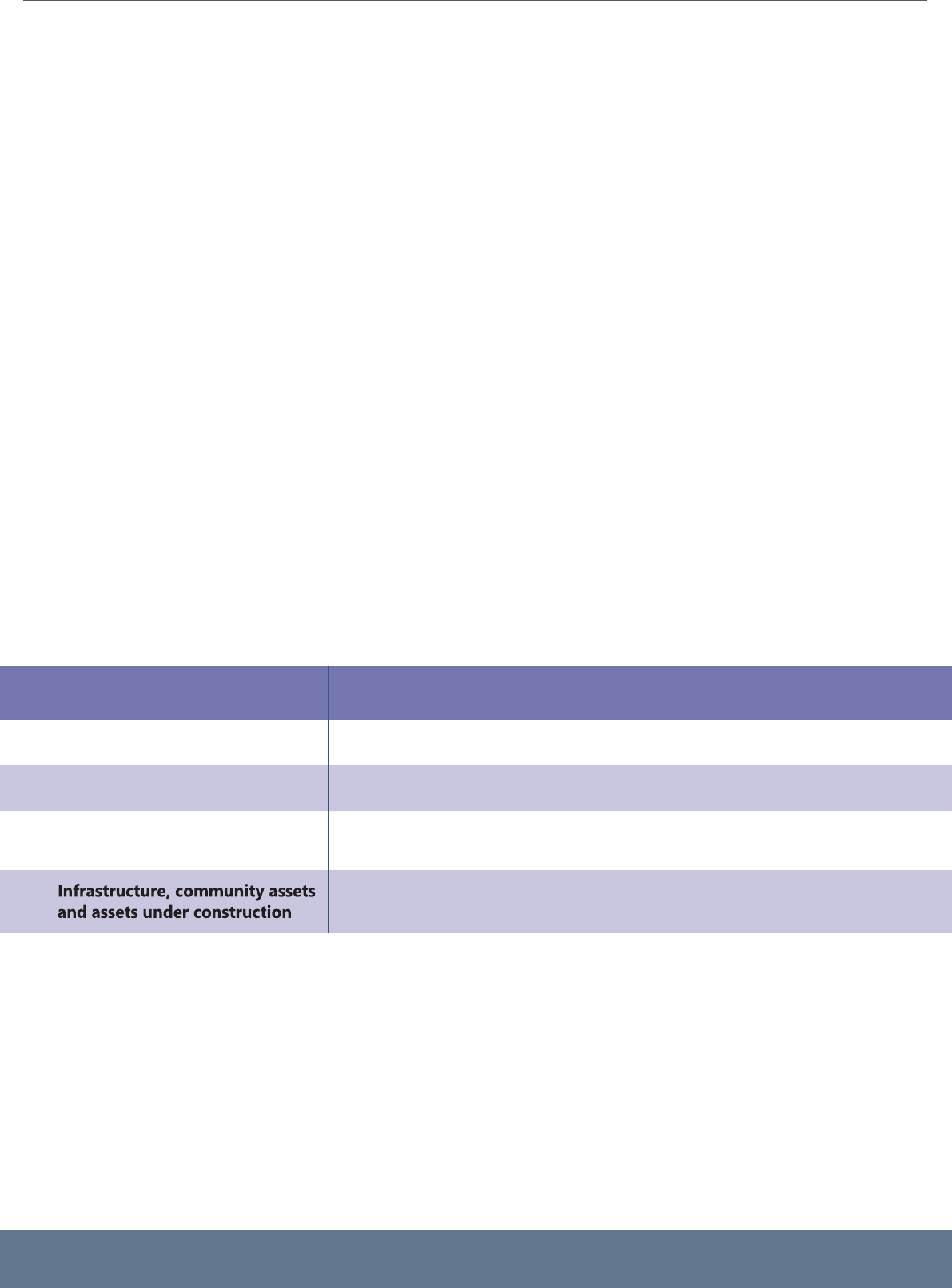
STATEMENT OF ACOUNTS 2020
-
2021
35
The Council as Lessor
The Council does not have any finance leases where it acts as lessor.
16. OVERHEADS AND SUPPORT SERVICES
The cost of overheads and support services are charged to service segments in accordance with the
authority’s arrangements for accountability and financial performance.
17. PROPERTY, PLANT AND EQUIPMENT
Assets that have physical substance and are held for use in the provision of services or for administrative
purposes on a continuing basis are classed as Property, Plant and Equipment.
Recognition
Expenditure on the acquisition, creation or enhancement of Property, Plant and Equipment is capitalised
on an accruals basis, provided that it is probable that the future economic benefits or service potential
associated with the item will flow to the Council and the cost of the item can be measured reliably.
Expenditure that maintains but does not extend the previously assessed standard of performance of an
asset (e.g. repairs and maintenance) is charged to revenue as it is incurred.
Property, Plant and Equipment may also include assets held under finance leases, which have been
capitalised and included in the Balance Sheet at a value reflecting the fair value of the asset.
A de-minimis asset value of £10,000 has been set and expenditure on new assets of less than this amount is
charged to the service revenue account as a proxy for depreciation, unless the expenditure forms part of a
larger scheme.
Measurement
Assets are initially measured at cost, which comprises all expenditure that is directly attributable to bringing
an asset into working condition for its intended use. The Council does not capitalise borrowing costs
incurred whilst assets are under construction.
Assets are then carried in the Balance Sheet using the following measurement bases:
Where there is no market based evidence of fair value because of the specialist nature of an asset,
depreciated replacement cost is used as an estimate for fair value. Where assets have a short useful life then
depreciated historical cost is used as a proxy for fair value.
Assets included in the Balance Sheet at fair value are re-valued where there have been material changes in
their value, but as a minimum every 5 years. The Council’s housing stock is re-valued annually by applying
an appropriate housing price index to a series of beacon values at the start of the financial year.
Increases in valuations are matched by a credit to the Revaluation Reserve to recognise unrealised gains.
Exceptionally, gains might be credited to the Income and Expenditure Statement where they arise from the
reversal of an impairment loss previously charged to a service revenue account.
Property, Plant and Equipment Fair value determined in the existing use of the asset
Investment Properties
Fair value to reflect market conditions at the end of the reporting
period
Depreciated historic cost once the asset becomes operational
Fair value in the existing use value for social housing
Dwellings
Basis of Valuation
Asset Category

STATEMENT OF ACOUNTS 2020
-
2021
36
Where decreases in value are identified they are accounted for by a debit to the Revaluation Reserve to
the extent that an accumulated gain has been recorded against that asset; where there is no balance or an
insufficient balance on the revaluation reserve for that asset the write down of the asset value is charged
against the relevant service within the Comprehensive Income and Expenditure Statement.
The Revaluation Reserve contains revaluation gains recognised since 1st April 2007 only, the date of its
formal implementation. Revaluations are recorded by individual asset. Gains arising before that date have
been consolidated into the Capital Adjustment Account.
Costs of dismantling assets such as roofs, windows and heating systems in Council Dwellings are included in
the costs paid to the main contractor. The main contractor is responsible for the disposal of the dismantled
assets. The dismantled assets have been assessed by the valuer as only having a negligible value.
Impairment
Assets are assessed at each year-end as to whether there is any indication that an asset may be impaired.
Where there is an indication that there is a material impairment in the value of an asset when compared to
the carrying value an impairment loss is recognised. The impairment loss is written down to the revaluation
reserve to the extent that any balance for that asset is held within the revaluation reserve. Where there is no
balance or an insufficient balance then the carrying amount of the asset is written down against the relevant
service line in the Comprehensive Income and Expenditure Statement.
Disposals and Non-Current Assets Held for Sale
When it becomes probable that the carrying amount of an asset will be recovered principally through a sale
transaction rather than continued service use then it is reclassified as an asset held for sale. The asset is re-
valued immediately before classification and then carried at the lower of this amount or fair value less costs
of disposal. Where there is a subsequent decrease in the valuation determined on classification to Asset
held for sale then a loss is posted to the Other Operating Expenditure line in the Comprehensive Income
and Expenditure Statement. Gains in the fair value of assets held for sale are only recognised to the extent
that they reverse a previous loss recognised within the Comprehensive Income and Expenditure Statement.
Depreciation is not charged on Assets Held for Sale.
When an asset is disposed of or decommissioned, the carrying value of the asset in the Balance Sheet
is written off to the Other Operating Expenditure line in the Comprehensive Income and Expenditure
Statement as part of the gain or loss on disposal. Receipts from disposals are credited to the same line in
the Comprehensive Income and Expenditure Statement as part of the gain or loss on disposal (i.e. netted off
against the carrying value of the asset at the time of disposal). Any revaluation gains relating to the asset in
the Revaluation Reserve are transferred to the Capital Adjustment Account.
Amounts received in excess of £10,000 are categorised as capital receipts. A proportion of receipts relating
to housing disposals is payable to the Government. The balance of receipts is required to be credited to the
Capital Receipts Reserve, and can then only be used for new capital investment or set aside to reduce the
Council’s underlying need to borrow (the capital financing requirement). Receipts are appropriated to the
Capital Receipt Reserve within the Movement in Reserves Statement.
The written-off value of disposals is not a charge against Council Tax, as the cost of non-current assets is
fully provided for under separate arrangements for capital financing. Amounts are appropriated to the
Capital Adjustment Account from the General Fund Balance within the Movement in Reserves Statement.

STATEMENT OF ACOUNTS 2020
-
2021
3 7
Depreciation
Depreciation is provided for on all Property, Plant and Equipment over a period of their estimated useful
lives; freehold land is determined to have an infinite economic life and is not depreciated, assets under
construction are not depreciated until they become operational in providing services. Depreciation is
calculated using the straight-line method. Assets are depreciated over the estimated economic life of the
asset, which has been assessed as being the following periods:
Council dwellings 40 years
Other HRA assets 10 - 80 years
Other Buildings 10 - 80 years
Vehicles, plant and equipment
3 - 10 years
Infrastructure 10 - 40 years
Community Assets 20 years
Revaluation gains are also depreciated. The difference between the depreciation on the current value and
that, which would have been charged on the historic value, is transferred each year from the Revaluation
Reserve to the Capital Adjustment Account.
Componentisation
The Council allocates the costs of an individual asset to its various components to calculate depreciation
charges where the value of the asset exceeds £500K and more than one individual component exceeds 20%
of the asset value. The impact on depreciation charges for assets below the threshold is not considered
material. The componentisation is based on the following elements of the asset:-
• Boilers, heating and plant systems
• Lifts
• Roofs
• Windows and doors
In terms of Council Dwellings, these assets are collectively valued in excess of £500K. However, when
comparing the value of depreciation charged on a component basis compared to the current 40-year life
straight-line methodology, the difference is not considered material. Council Dwellings are therefore not
currently subject to componentisation but the policy is to be reviewed on an annual basis.
18. HERITAGE ASSETS
The Council’s Heritage Assets held are Historical Monuments, Statues and Artwork. Heritage Assets are
recognised and measured (including the treatment of revaluation gains and losses) in accordance with the
Council’s accounting policies on property, plant and equipment. However, no depreciation is charged on
Heritage Assets as they are deemed to have an indeterminate life and have a high residual value.
Historical Monuments
The Council has seven Cenotaphs that are located at various outside locations throughout the District.
These monuments are reported in the Balance Sheet on an average replacement cost basis, which has been
agreed following discussions with our internal valuer.
Statues and Artwork Collection
The collection includes Statues, Sculptures and Mosaics situated within the local town and village streets
throughout the Council. The collection depicts the Council’s mining and engineering history to ensure
the knowledge, culture and understanding of our heritage is preserved for future generations. An artwork
example would be The Flight of Fancy sculpture that represents the Rolls Royce Flying Bedstead thrust
measuring machine that was developed to research the use of direct lift. These items are reported in the
Balance Sheet on an historic cost basis or on an insurance valuation basis and were mainly purchased from
grant funding.

STATEMENT OF ACOUNTS 2020
-
2021
38
NON BALANCE SHEET ITEMS
The Council also holds a collection of items that are not recognised on the Balance Sheet as cost
information is not readily available and the Council believes that the benefits of obtaining the valuation
for these items would not justify the cost. These items are believed to have a value of £10k or less. The
majority of the collection is street mosaics, murals and sculptures purchased through grant funding or
produced by the public art events. The Council has also received a number of donations including a
Knitting machine and a Stocking machine dating back to the 18th and 19th century, both of which are
believed to be forerunners to the Spinning Jenny. It is difficult to obtain a valuation on these two items
as there is no comparable item that provides a market value. Most assets are located on public streets,
in parks or are on display within public council buildings. A few items are stored securely in the Council’s
Council Offices and not currently available for public viewing however, ways of making these items more
accessible are being developed.
HERITAGE ASSETS
–
GENERAL
Heritage Assets are reviewed by the Council for impairments such as where an item has suffered physical
deterioration or breakage. Any impairment is measured and recognised within the Revaluation Reserve.
The Council works closely with the Ashfield War Memorial Committee to preserve and maintain the local
historical monuments. All other Heritage Assets are reviewed and maintained as required. Disposal
proceeds are disclosed separately in the notes to the financial statements and accounted for in accordance
with statutory accounting requirements relating to capital expenditure and capital receipts.
19. PROVISIONS, CONTINGENT LIABILITIES AND CONTINGENT ASSETS
a. Provisions
Provisions are made where an event has taken place that gives the Council an obligation that probably
requires settlement by a transfer of economic benefits, but where the timing of the transfer is uncertain.
For instance, the Council may be involved in a court case that could eventually result in the making of a
settlement or the payment of compensation.
Provisions are charged to the appropriate service revenue account in the year that the Council becomes
aware of the obligation, and are measured at the best estimate at the balance sheet date of the expenditure
required to settle the obligation, taking into account relevant risks and uncertainties.
When payments are eventually made, they are charged to the provision set up in the Balance Sheet.
Estimated settlements are reviewed at the end of each financial year; where it becomes more likely than not
that a transfer of economic benefits will not be required (or a lower settlement than anticipated is made),
the provision is reversed and credited back to the relevant service revenue account.
Where some or all of the payment required to settle a provision is expected to be met by another party (e.g.
from an insurance claim), this is only recognised as income in the relevant service revenue account if it is
virtually certain that reimbursement will be received if the obligation is settled.
b. Contingent Liabilities
A Contingent Liability arises where an event has taken place that gives the Council a possible obligation
whose existence will only be confirmed by the occurrence or otherwise of uncertain future events not
wholly within the control of the Council. Contingent Liabilities also arise in circumstances where a provision
would otherwise be made but either it is not probable that an outflow of resources will be required or the
amount of the obligation cannot be measured reliably. Contingent Liabilities are not recognised in the
Balance Sheet but disclosed in a note to the accounts.
c. Contingent Assets
A Contingent Asset arises where an event has taken place that gives the Council a possible asset whose
existence will only be confirmed by the occurrence or otherwise of uncertain future events not wholly
within the control of the Council. Contingent Assets are not recognised in the Balance Sheet but disclosed
in a note to the accounts where it is probable that there will be an inflow of economic benefits or service
potential.

STATEMENT OF ACOUNTS 2020
-
2021
39
20. RESERVES
The Council sets aside specific amounts as reserves for future policy purposes, or to cover contingencies.
Reserves are created by appropriating amounts out of the General Fund Balance in the Movement in
Reserves. When expenditure to be financed from a reserve is incurred, it is charged to the appropriate
revenue account in that year to score against the Surplus or Deficit on the Provision of Services in the
Comprehensive Income and Expenditure Statement. The reserve is then appropriated back into the General
Fund Balance in the Movement in Reserves Statement so that there is no net charge against Council Tax for
the expenditure.
The level of reserves and balances is reviewed annually to ensure they are appropriate. The General
Fund Balance, Earmarked Reserve and Reserves arising from Capital Receipts together with Capital Grants
Unapplied are deemed to be usable reserves in that they may be used to fund future expenditure.
Certain reserves are kept to manage the accounting processes for non-current assets, financial instruments
retirement benefits and employee benefits; these are termed unusable reserves and are not available to be
used to fund future expenditure.
21. REVENUE EXPENDITURE FUNDED FROM CAPITAL UNDER STATUTE
(
REFCUS
)
Expenditure incurred during the year that may be capitalised under statutory provisions but that does not
result in the creation of non-current assets has been charged as expenditure to the relevant service in the
Comprehensive Statement of Income and Expenditure in the year. Where the Council has decided to meet
the cost of this expenditure from existing capital resources or by borrowing, a transfer in the Movement
in Reserves Statement from the General Fund Balance to the Capital Adjustment Account reverses out the
amounts so that there is no impact on the level of council tax.
22. VALUE ADDED TAX
Value Added Tax (VAT) is excluded from all income and expenditure received and paid by the Council except
where it is classed as irrecoverable by HM Revenue and Customs.
23. THE COLLECTION FUND
i) Council Tax
The Council includes its share of the accrued Council Tax due for the year within its Comprehensive Income
and Expenditure Statement. The difference between this sum and the local precept for Council and parish
activities is reversed through the General Fund Balance to ensure only the level of Council Tax required to
pay for Council activities is credited to the General Fund in the year. The balance is taken to the Collection
Fund Adjustment Account, within the Balance Sheet.
Amounts collected on behalf of the other preceptors of Nottinghamshire County Council, Nottinghamshire
Police Authority and Nottinghamshire Fire Authority are treated as either debtors or creditors depending
upon the respective share of the Collection Fund attributable to these bodies at 31st March.
ii) Business Rates
The Council includes its share of accrued Business Rates due for the year within its Comprehensive Income
and Expenditure Statement. The difference between this sum and the forecast amount due to the Council
is reversed through the General Fund Balance to ensure only the level of Business Rates required to pay for
Council activities is credited to the General Fund in the year. The balance is taken to the Collection Fund
Adjustment Account, within the Balance Sheet.
Amounts collected on behalf of the other partners of the pool (Central Government, Nottinghamshire
County Council and Nottinghamshire Fire Authority) are treated as either debtors or creditors depending
upon the respective share of the Collection Fund attributable to these bodies at 31st March.

STATEMENT OF ACOUNTS 2020
-
2021
40
24.
FAIR VALUE MEASUREMENT
The authority measures some of its non-financial assets such as investment properties and potentially some
of its financial instruments at fair value at each reporting date. Fair value is the price that would be received
to sell an asset or paid to transfer a liability in an orderly transaction between market participants at the
measurement date. The fair value measurement assumes that the transaction to sell the asset or transfer the
liability takes place either:
a) in the principal market for the asset or liability, or
b) in the absence of a principal market, in the most advantageous market for the asset or liability.
The authority measures the fair value of an asset or liability using the assumptions that market participants
would use when pricing the asset or liability, assuming that market participants act in their economic best
interest.
When measuring the fair value of a non-financial asset, the authority takes into account a market
participant’s ability to generate economic benefits by using the asset in its highest and best use or by
selling it to another market participant that would use the asset in its highest and best use.
The authority uses valuation techniques that are appropriate in the circumstances and for which sufficient
data is available, maximising the use of relevant observable inputs and minimising the use of unobservable
inputs.
Inputs to the valuation techniques in respect of assets and liabilities for which fair value is measured or
disclosed in the authority’s financial statements are categorised within the fair value hierarchy, as follows:
• Level 1 – quoted prices (unadjusted) in active markets for identical assets or liabilities that the authority
can access at the measurement date
• Level 2 – inputs other than quoted prices included within Level 1 that are observable for the asset or
liability, either directly or indirectly
• Level 3 – unobservable inputs for the asset or liability.
